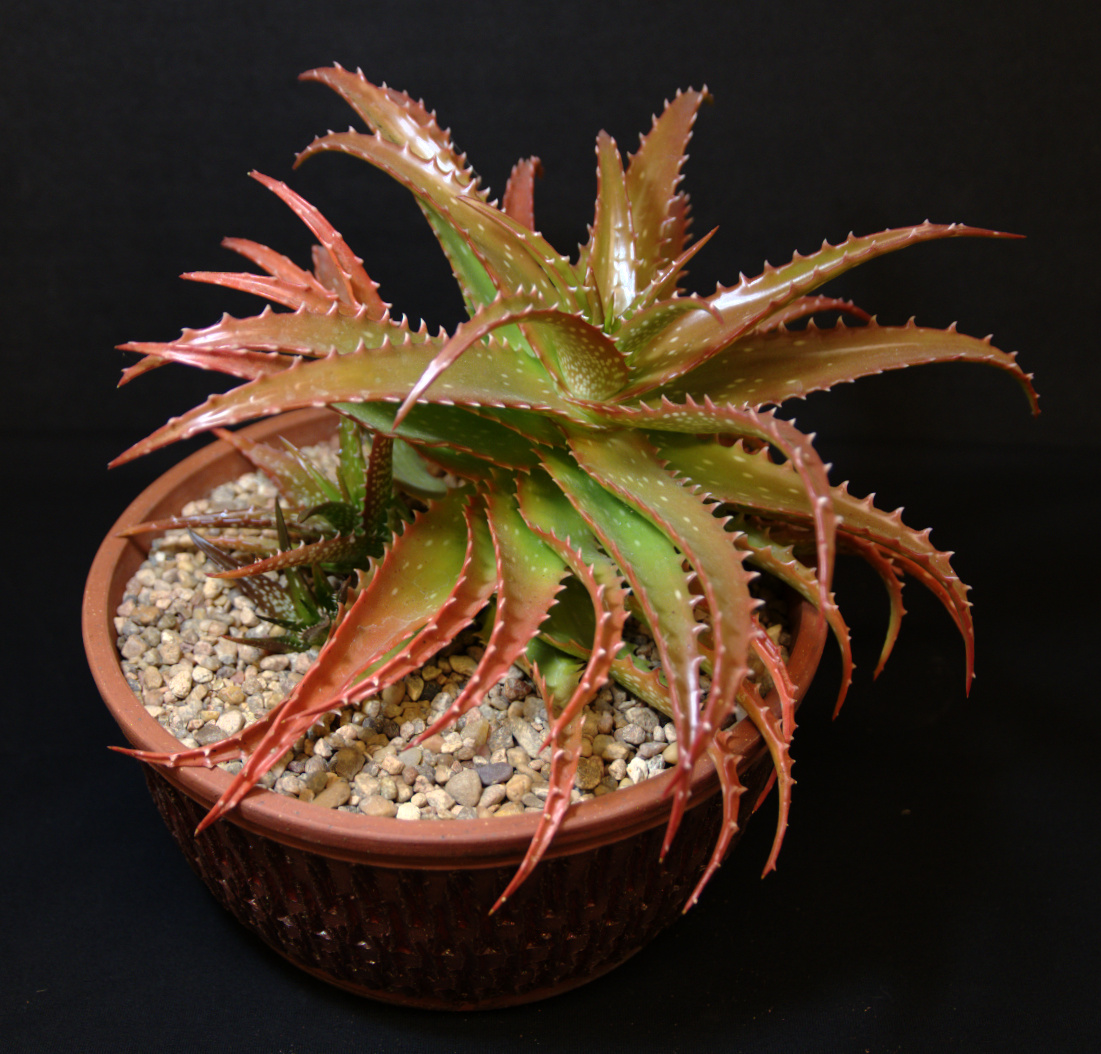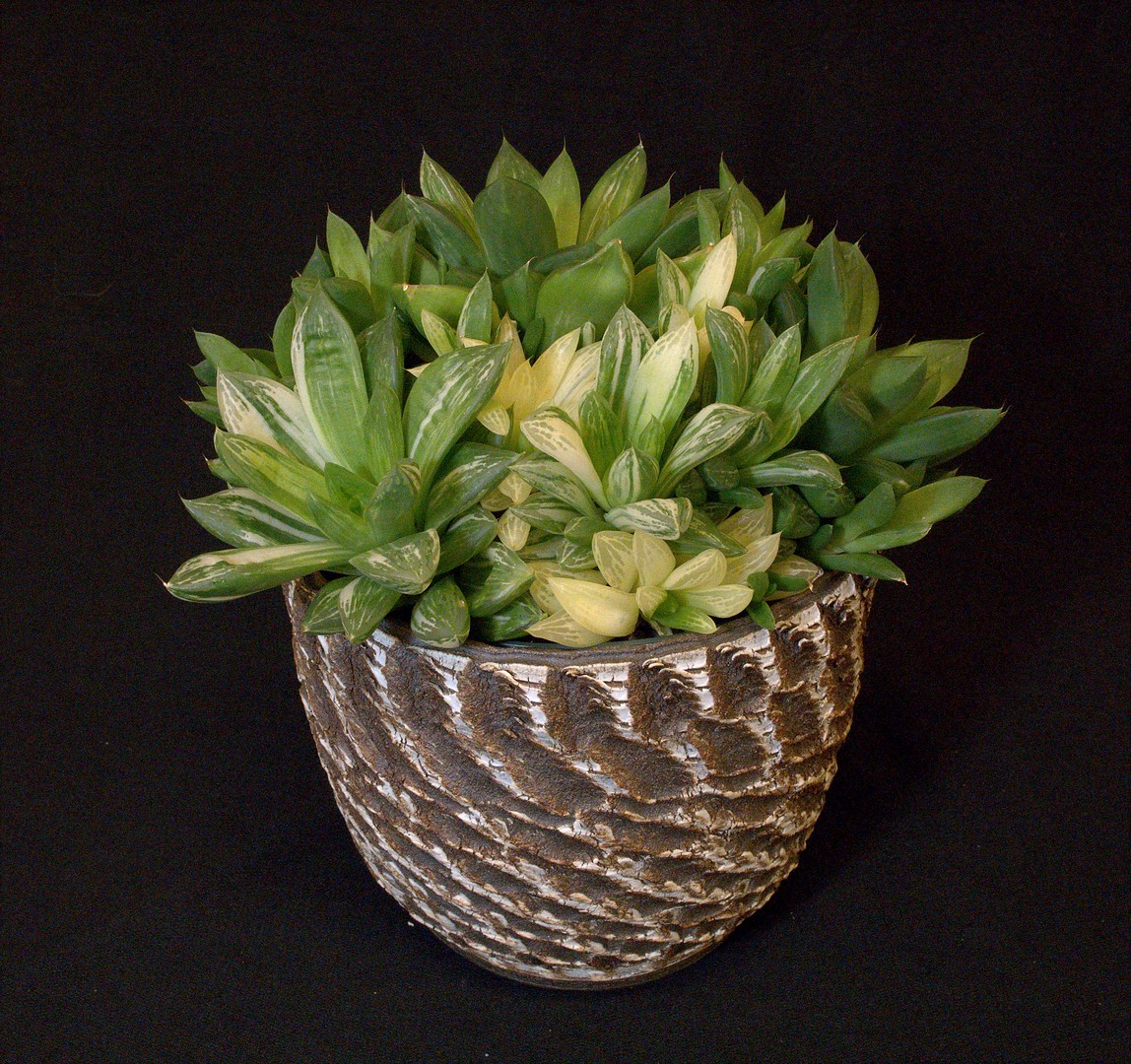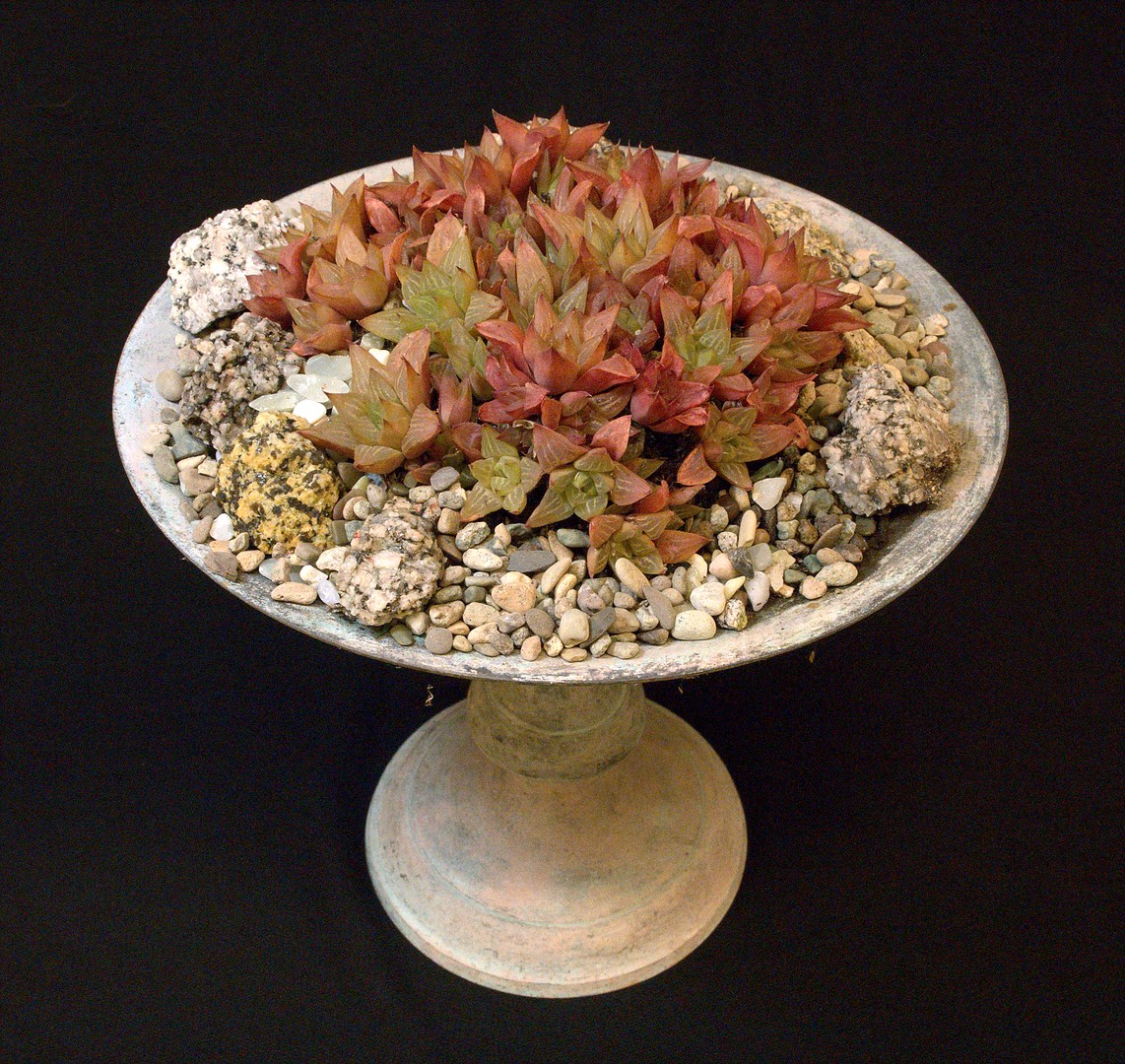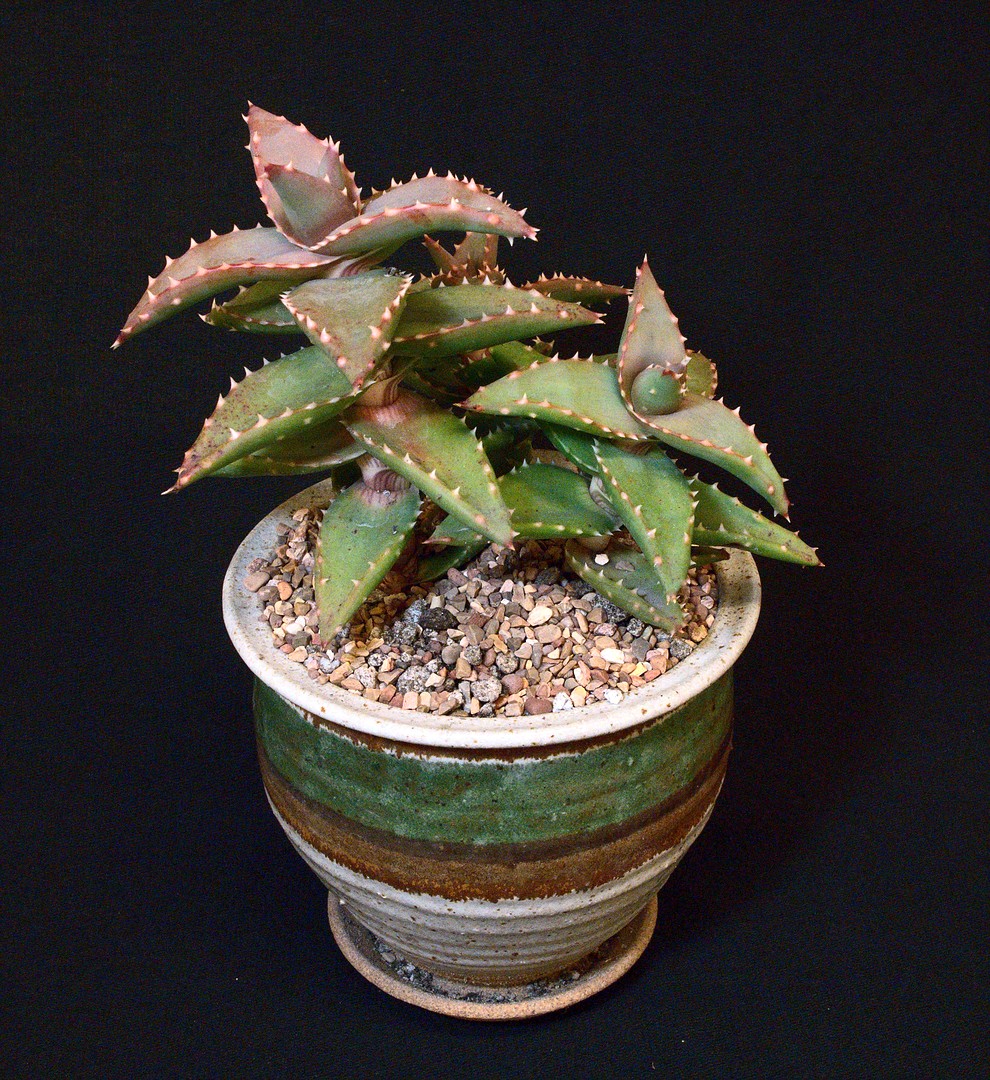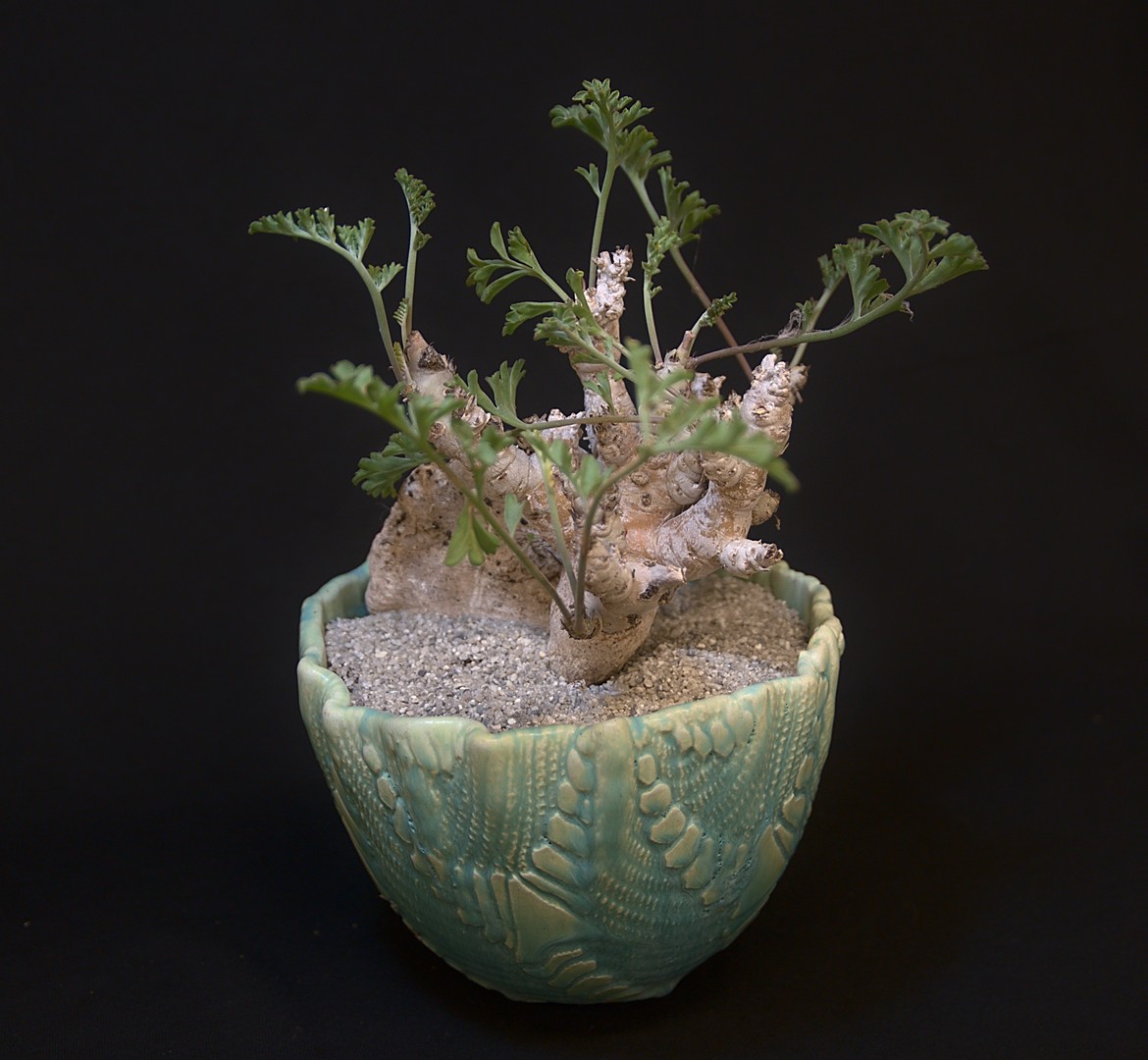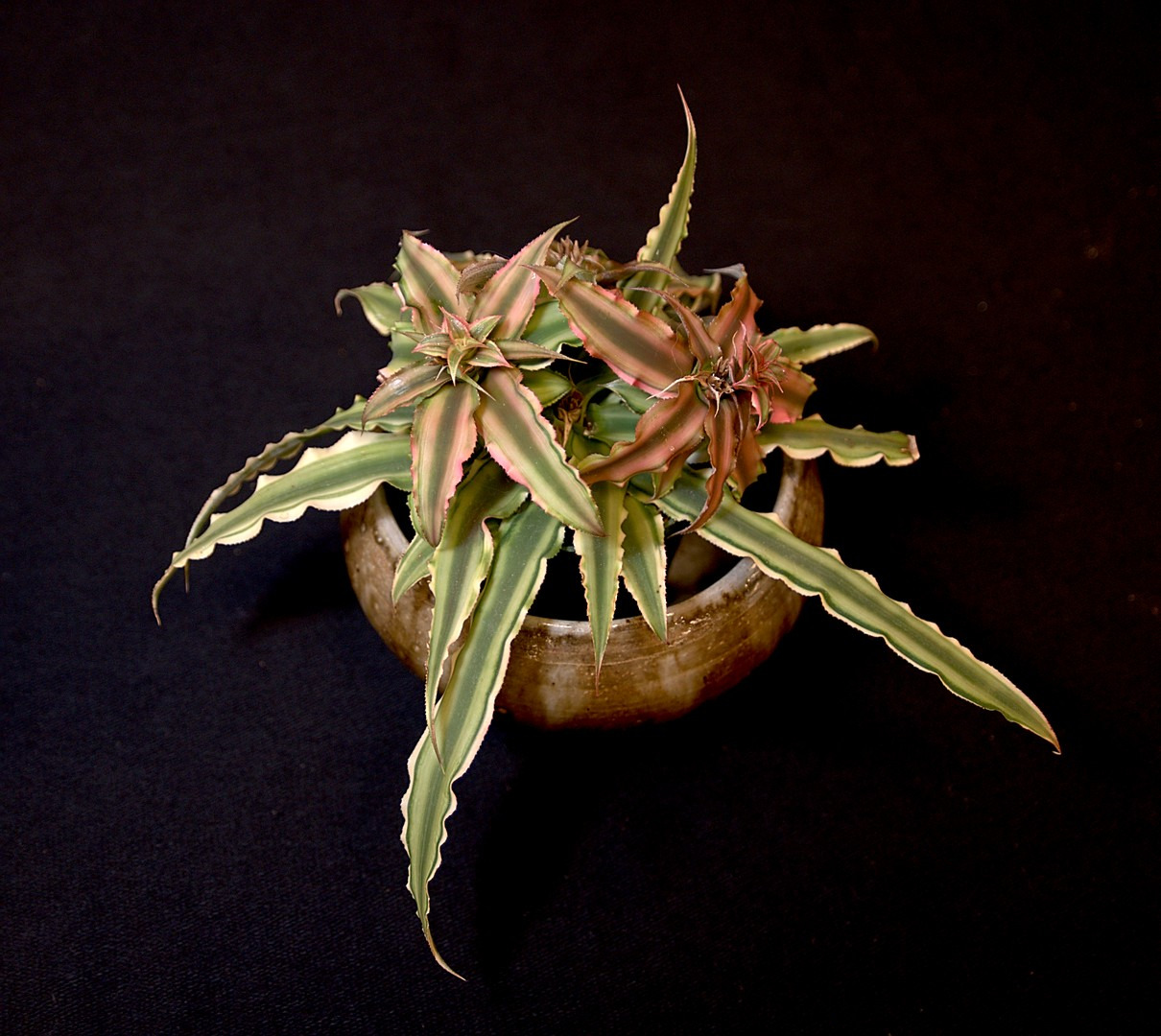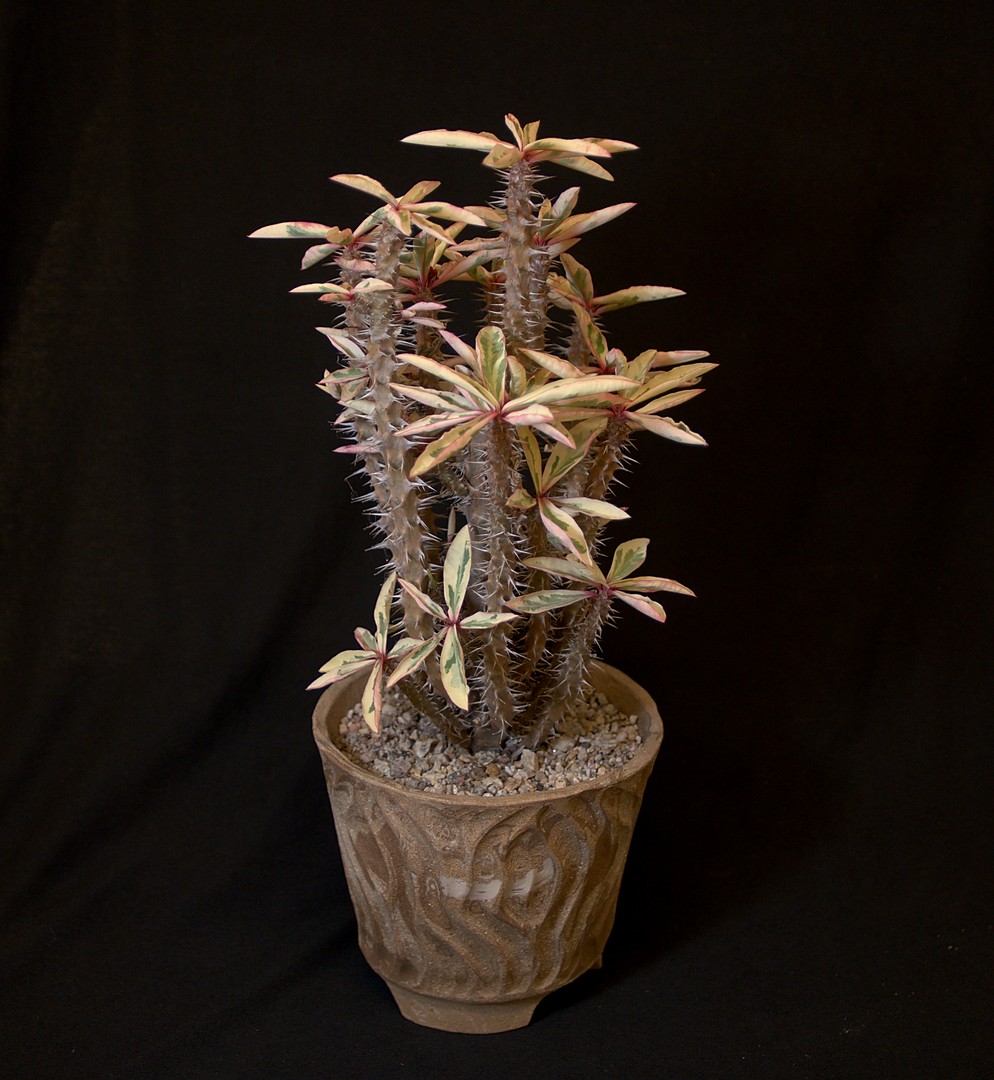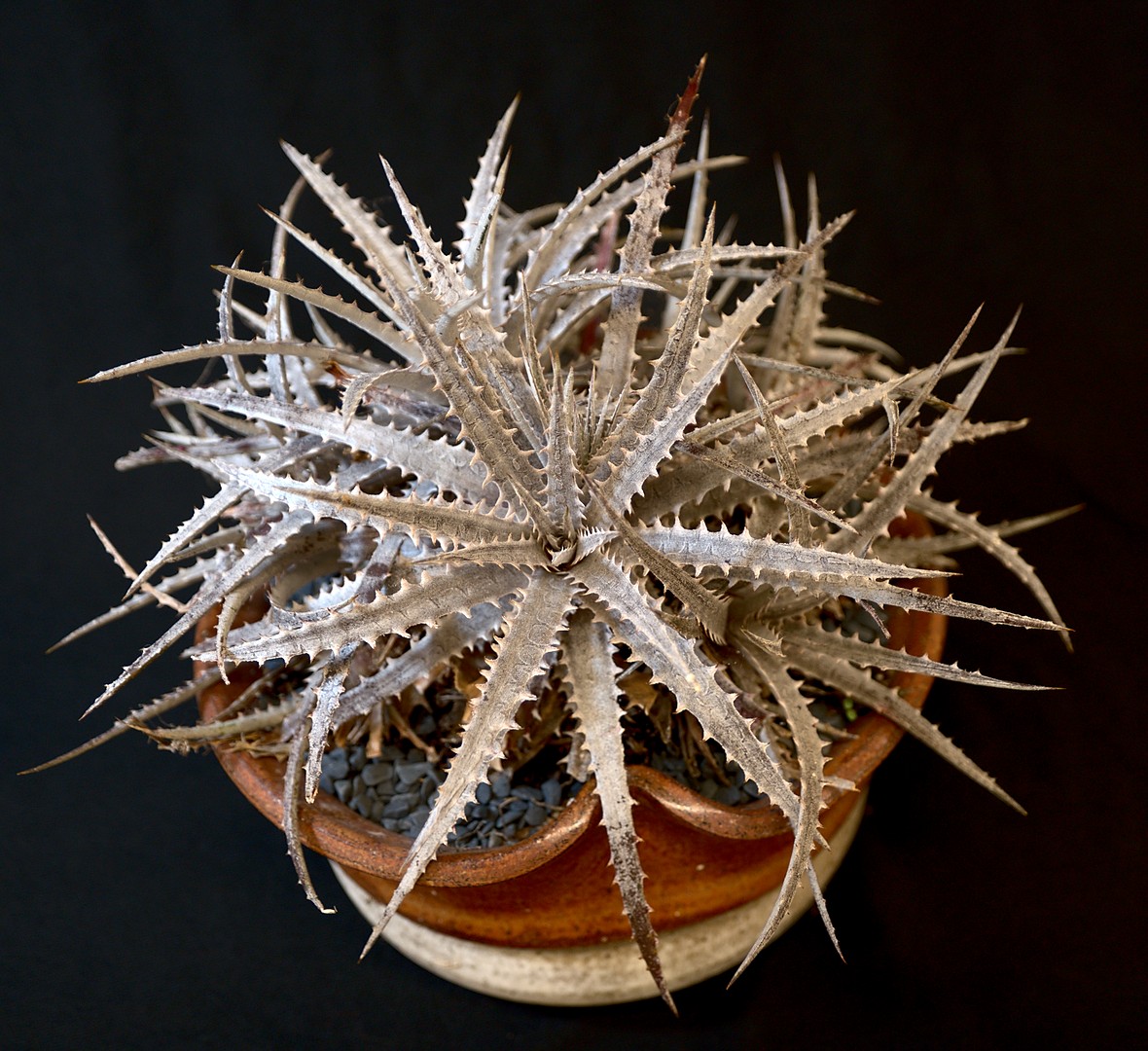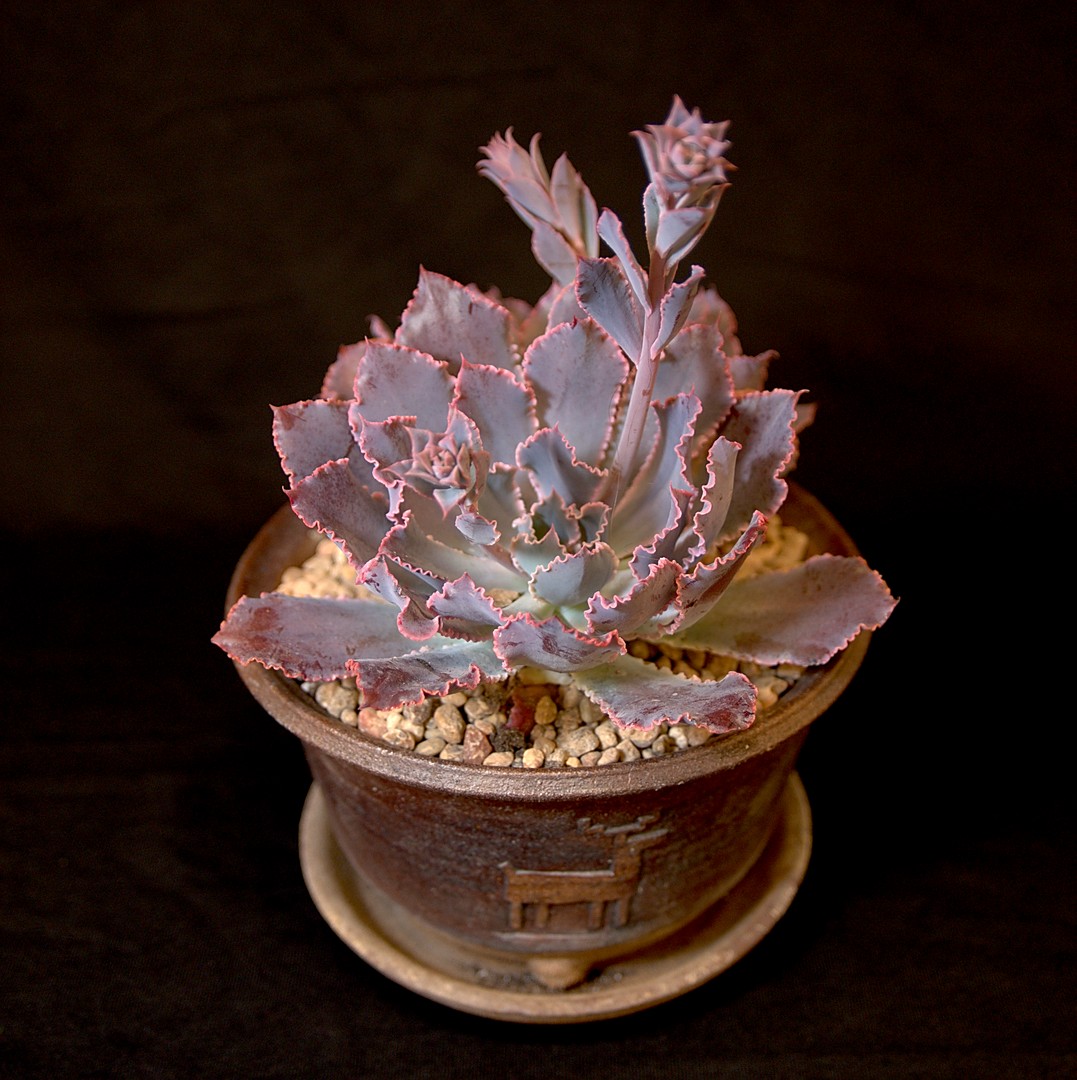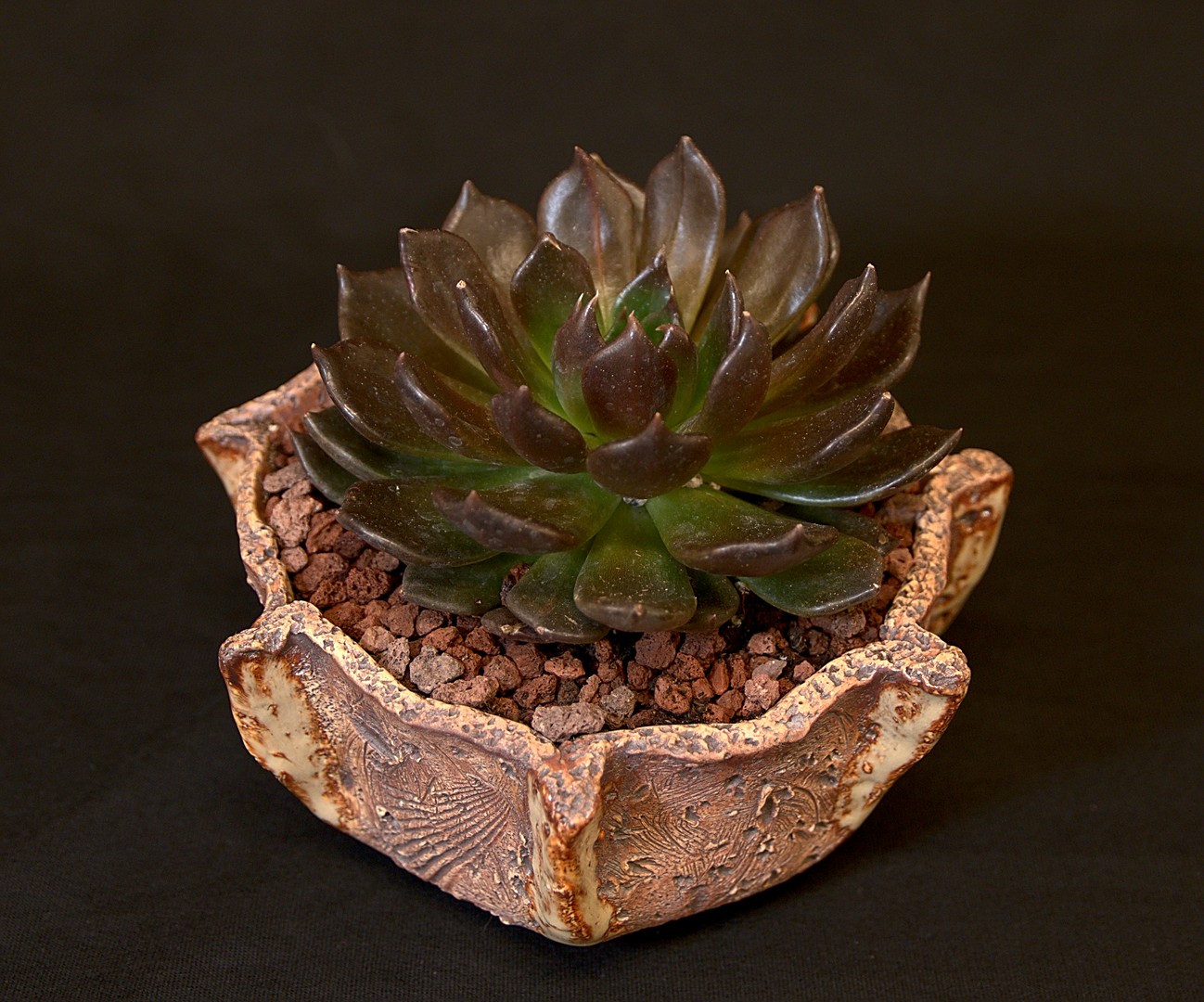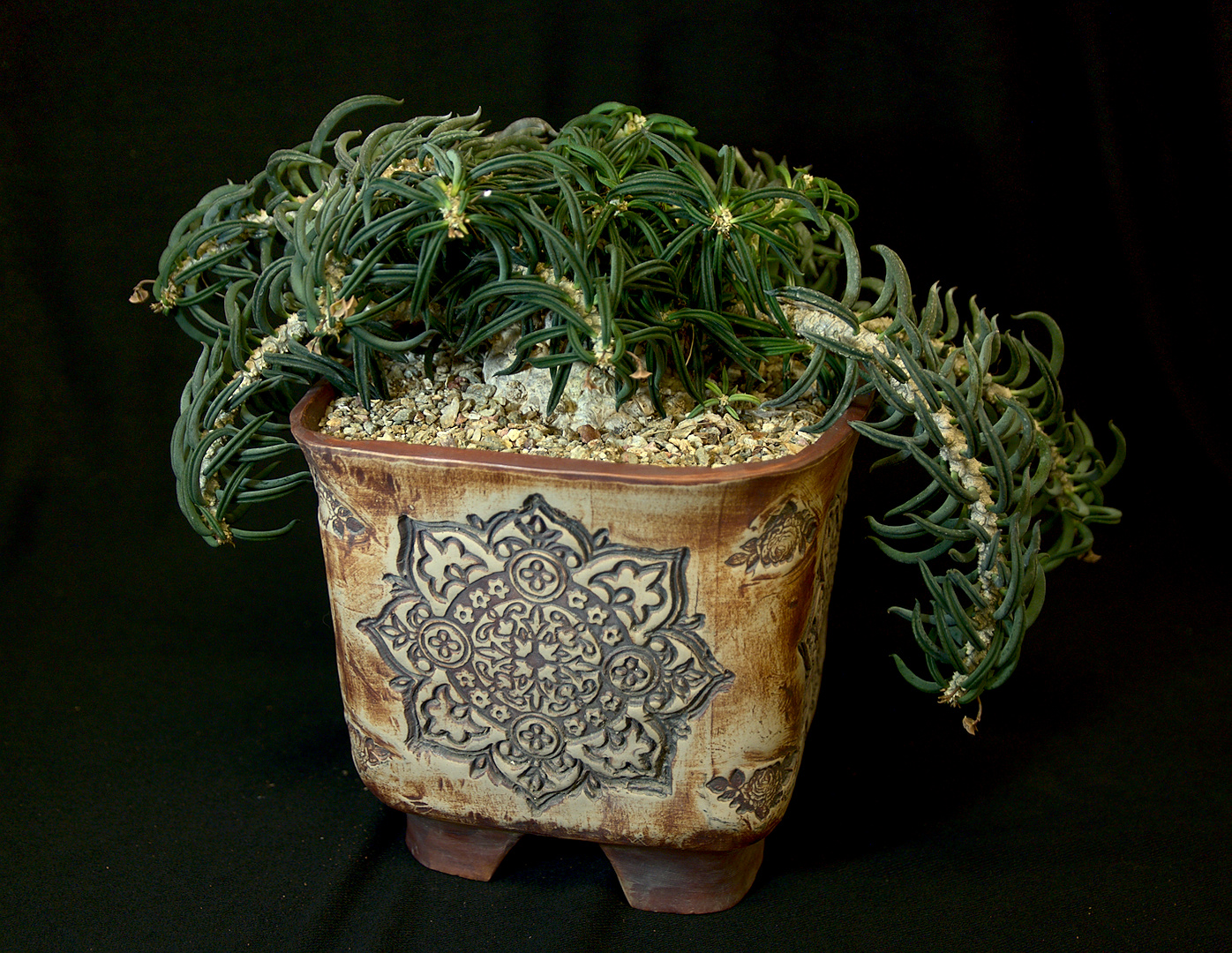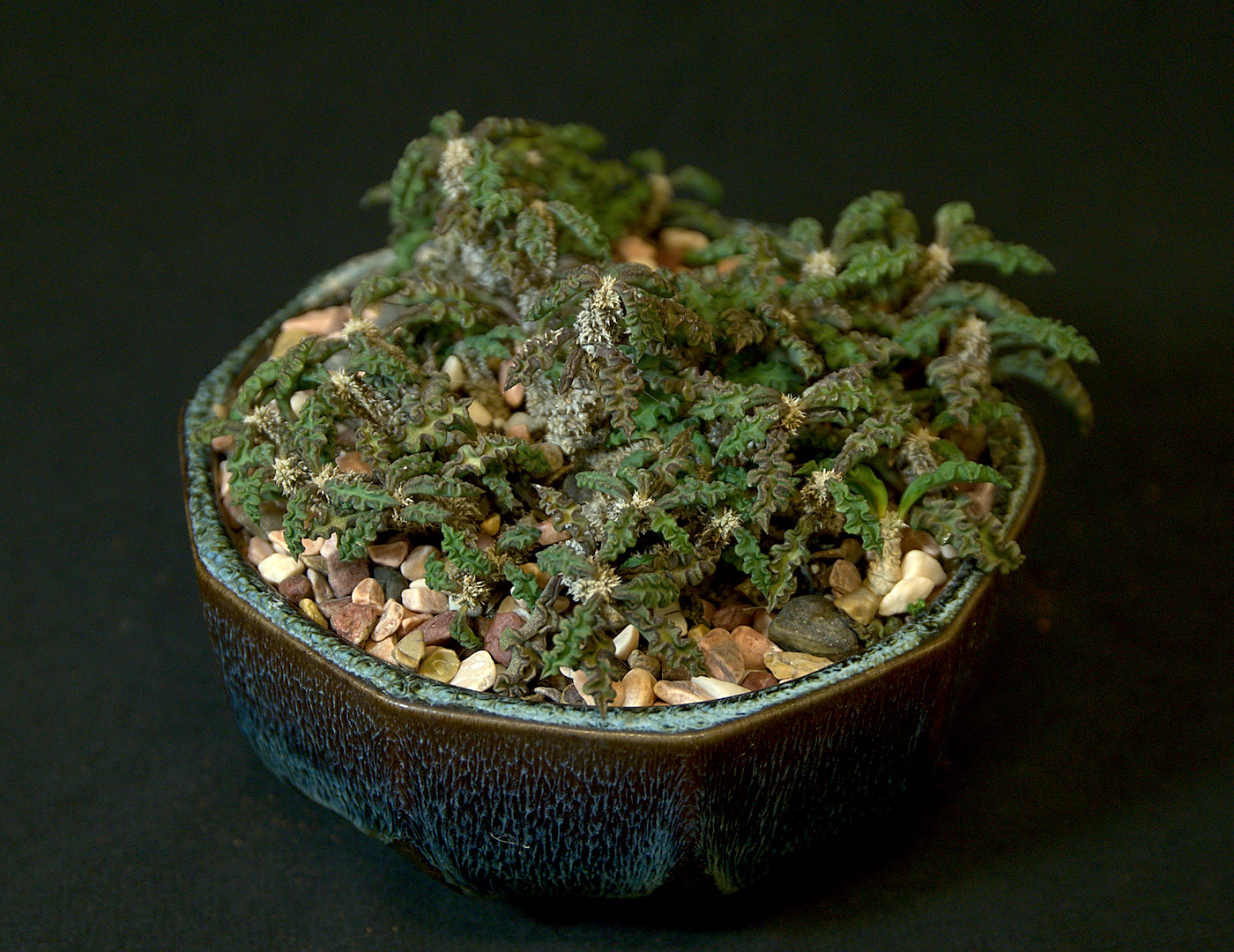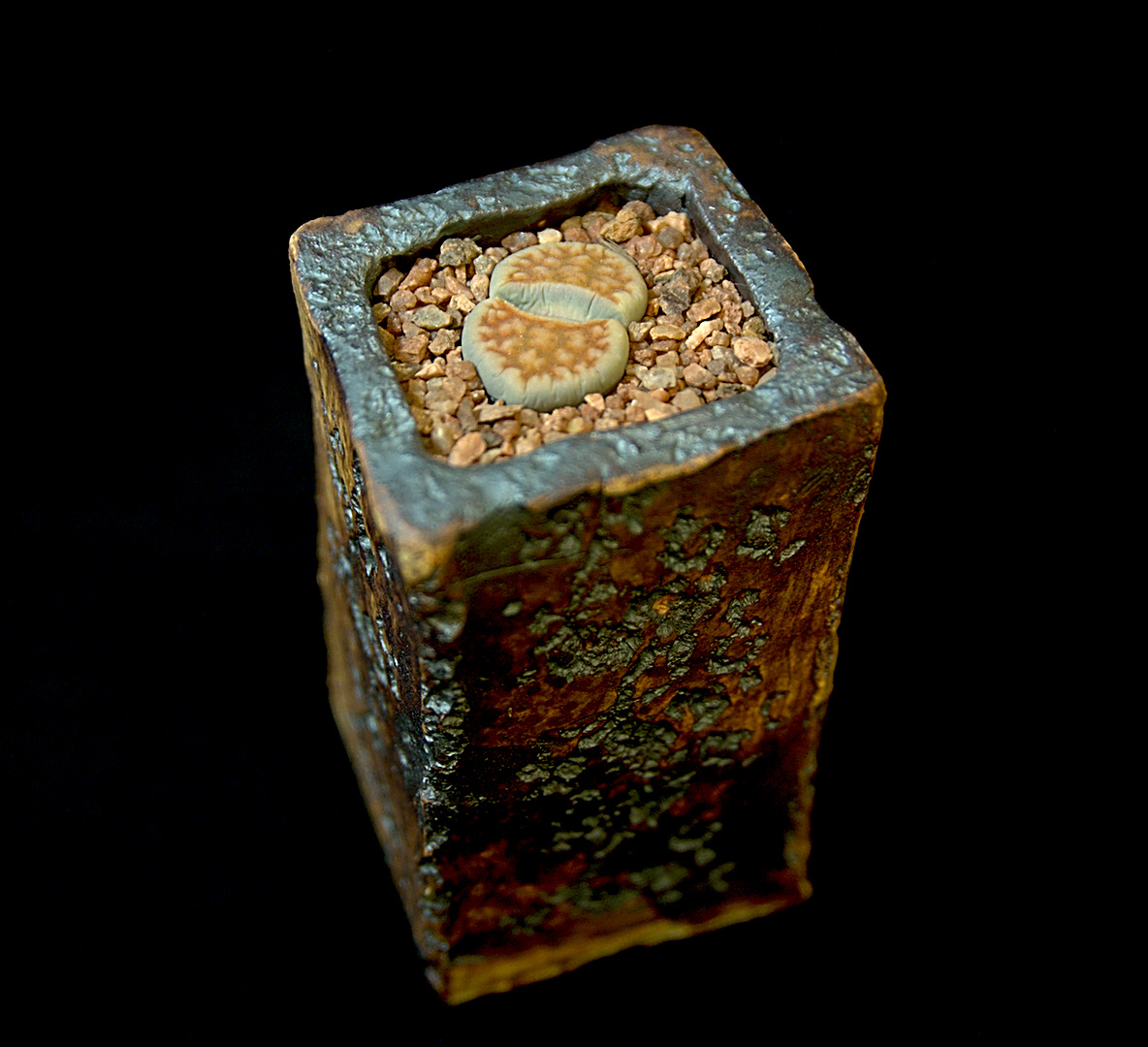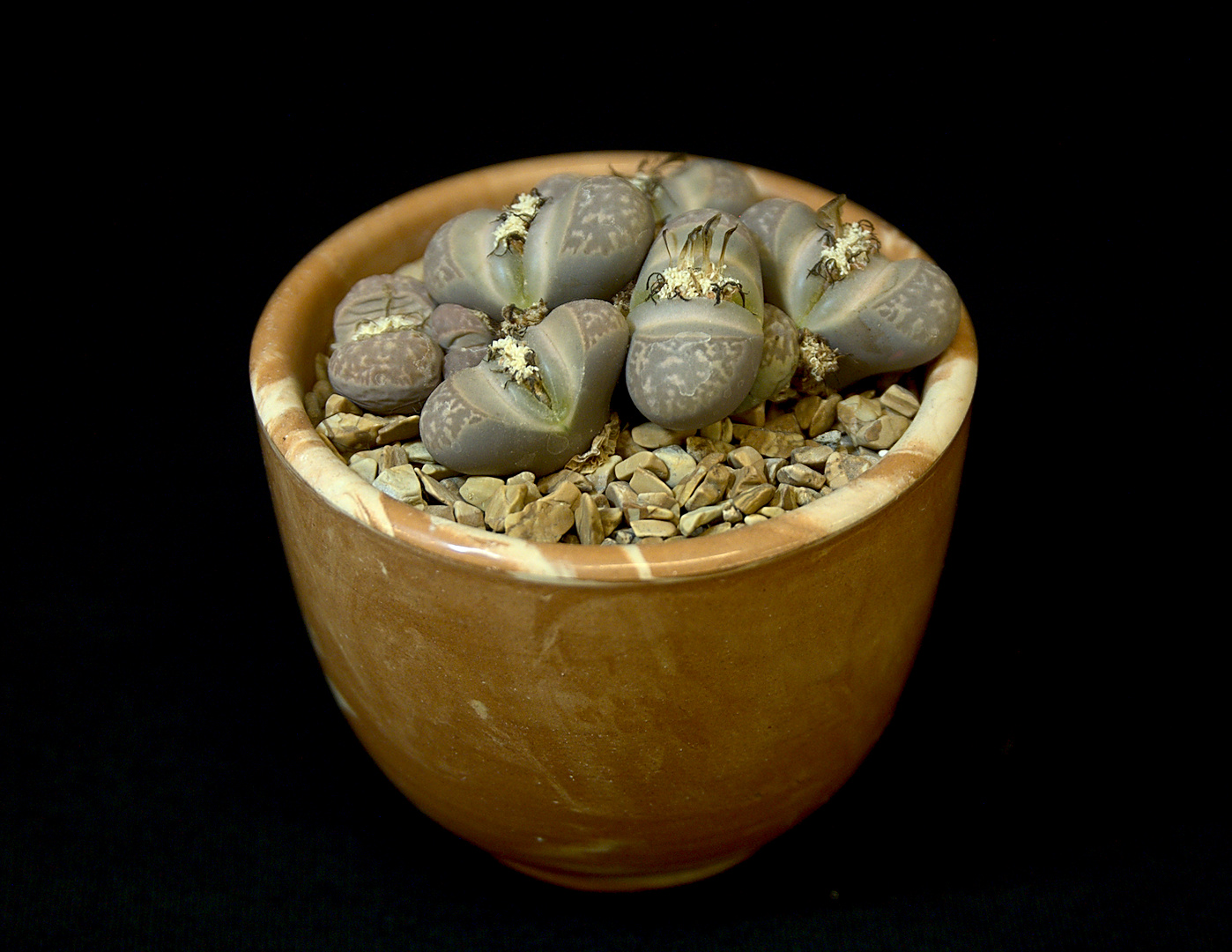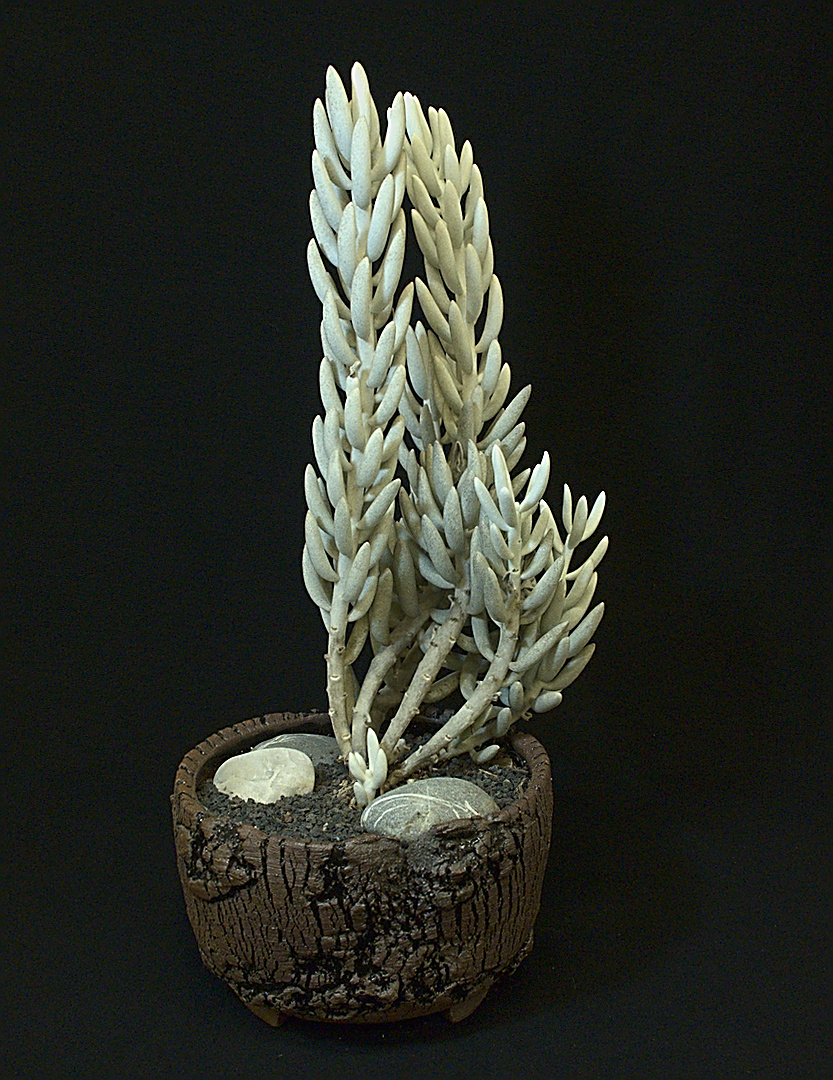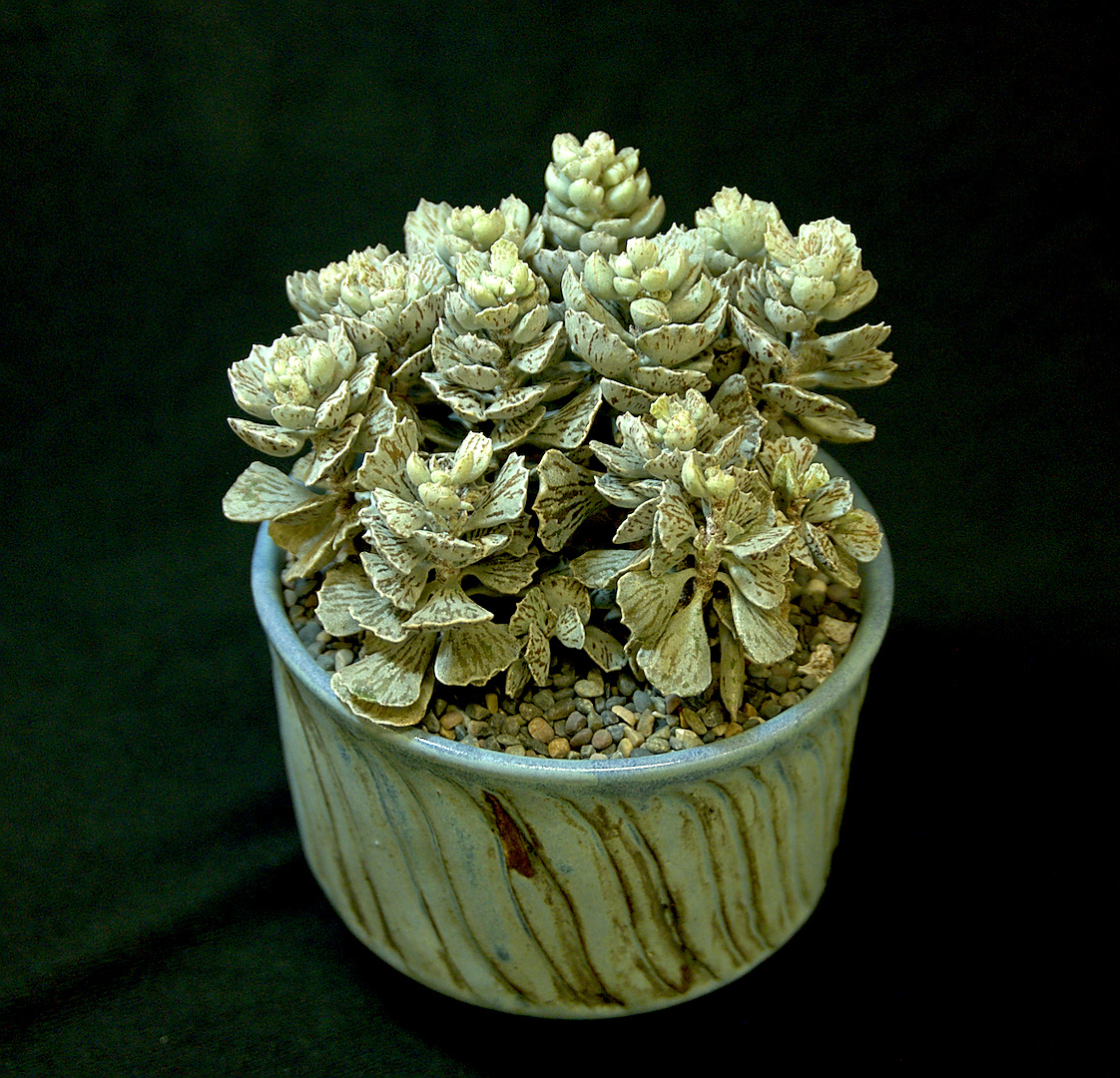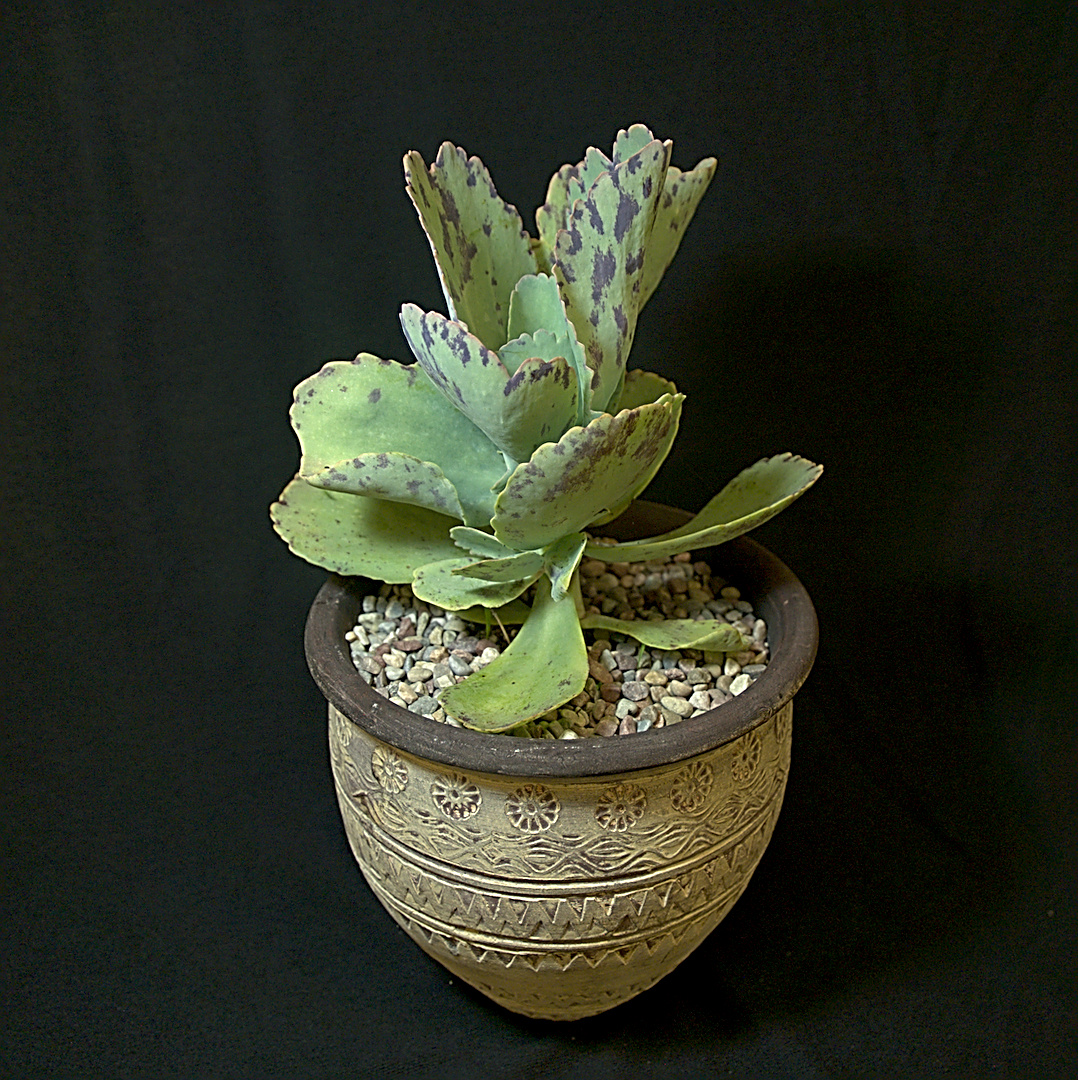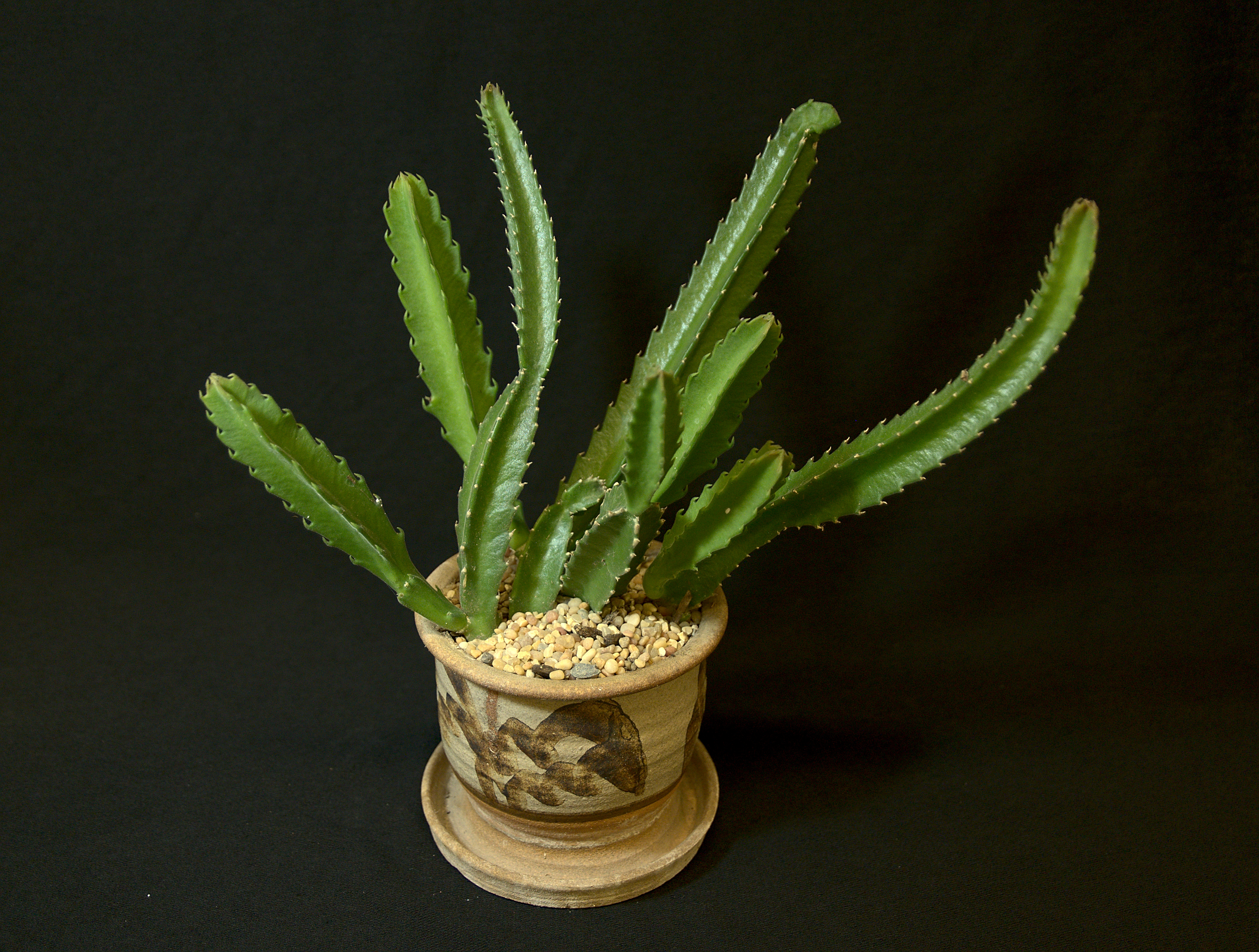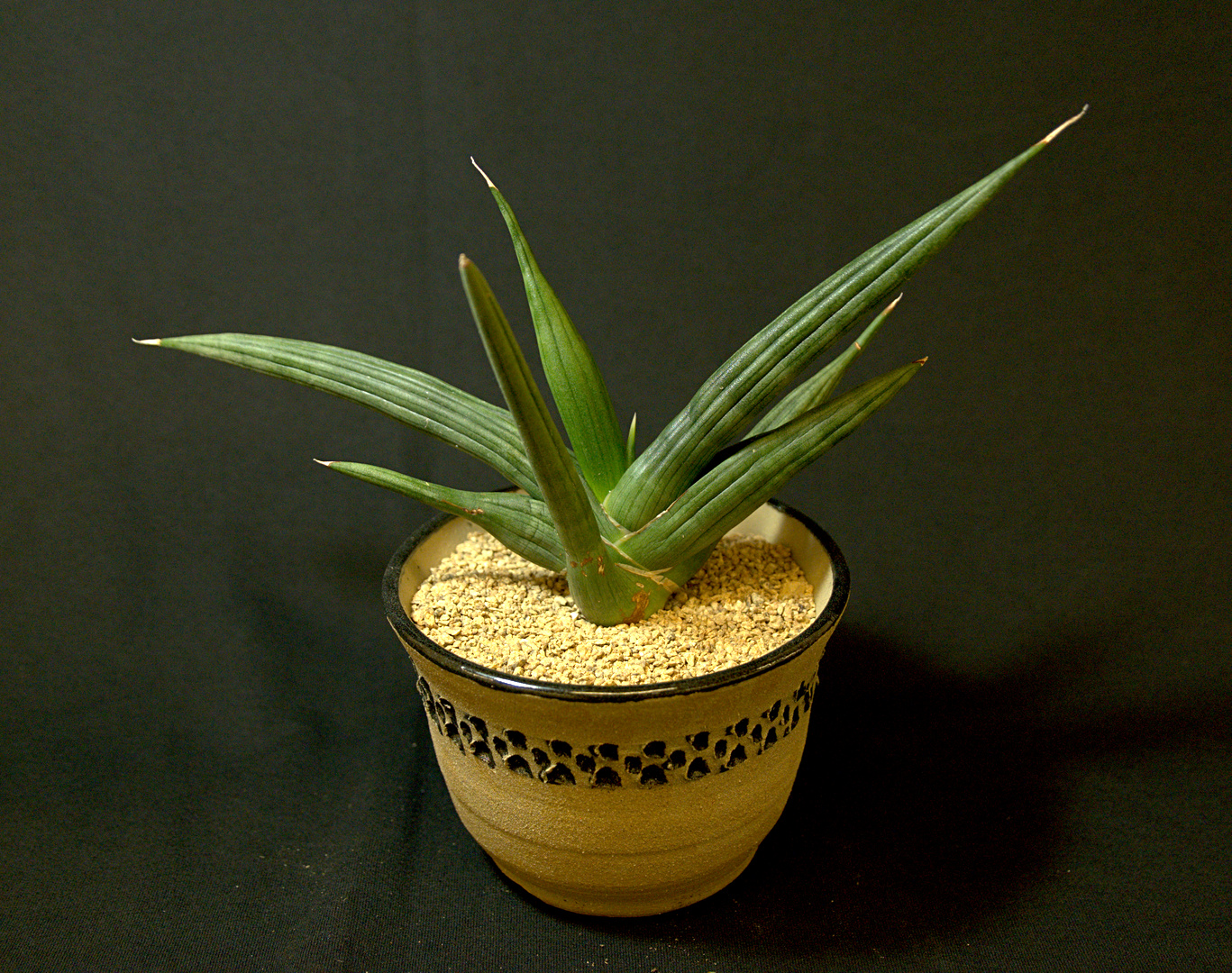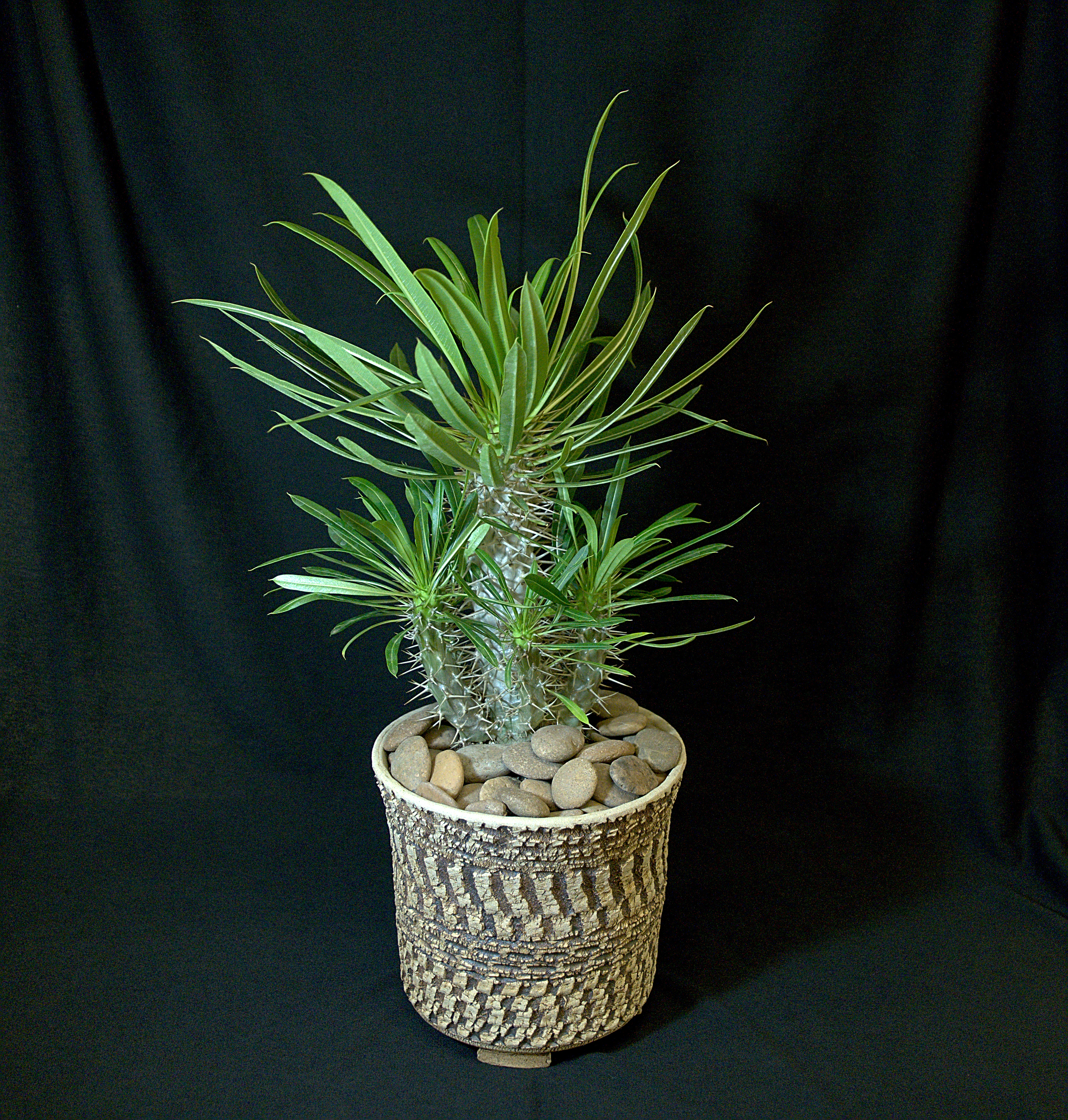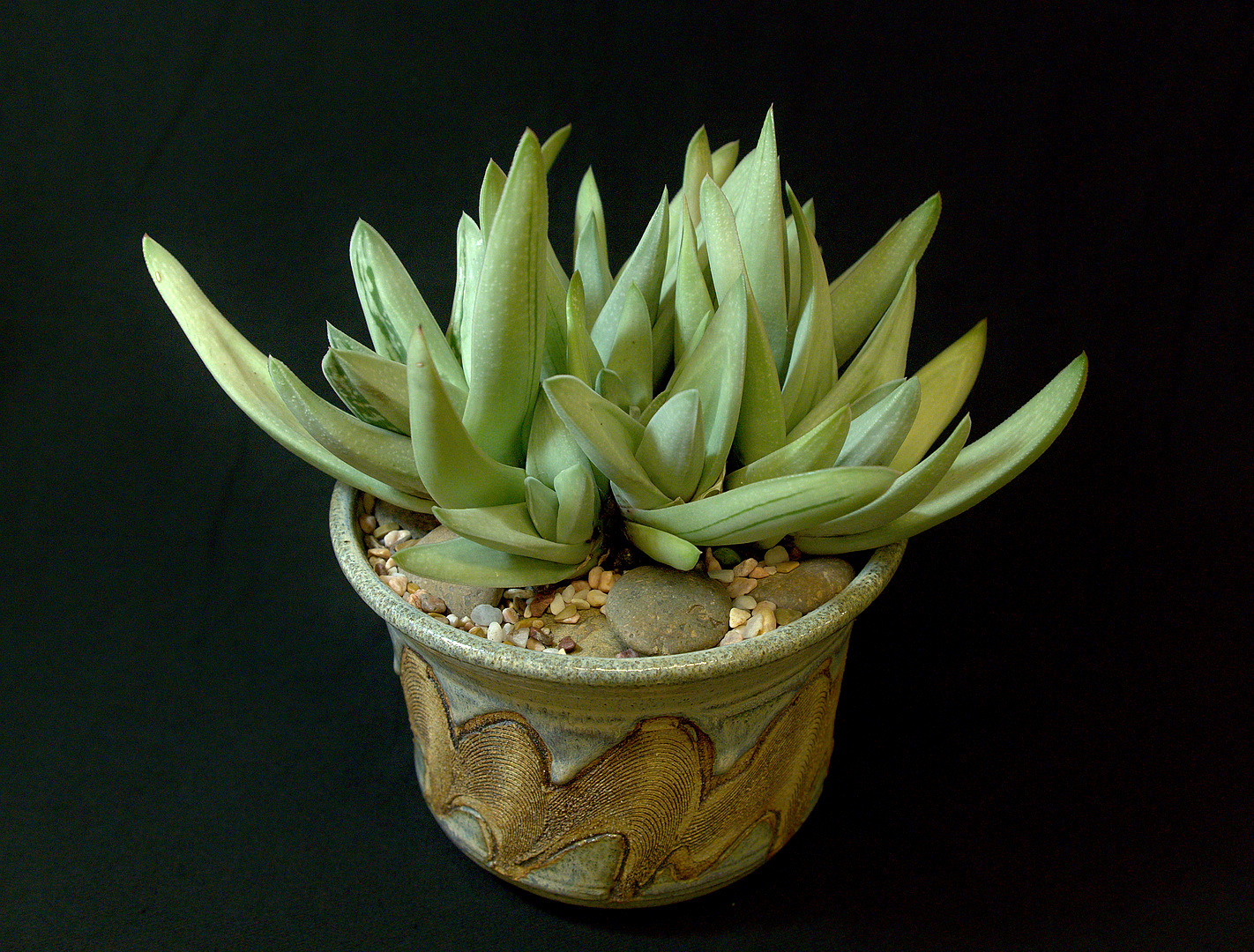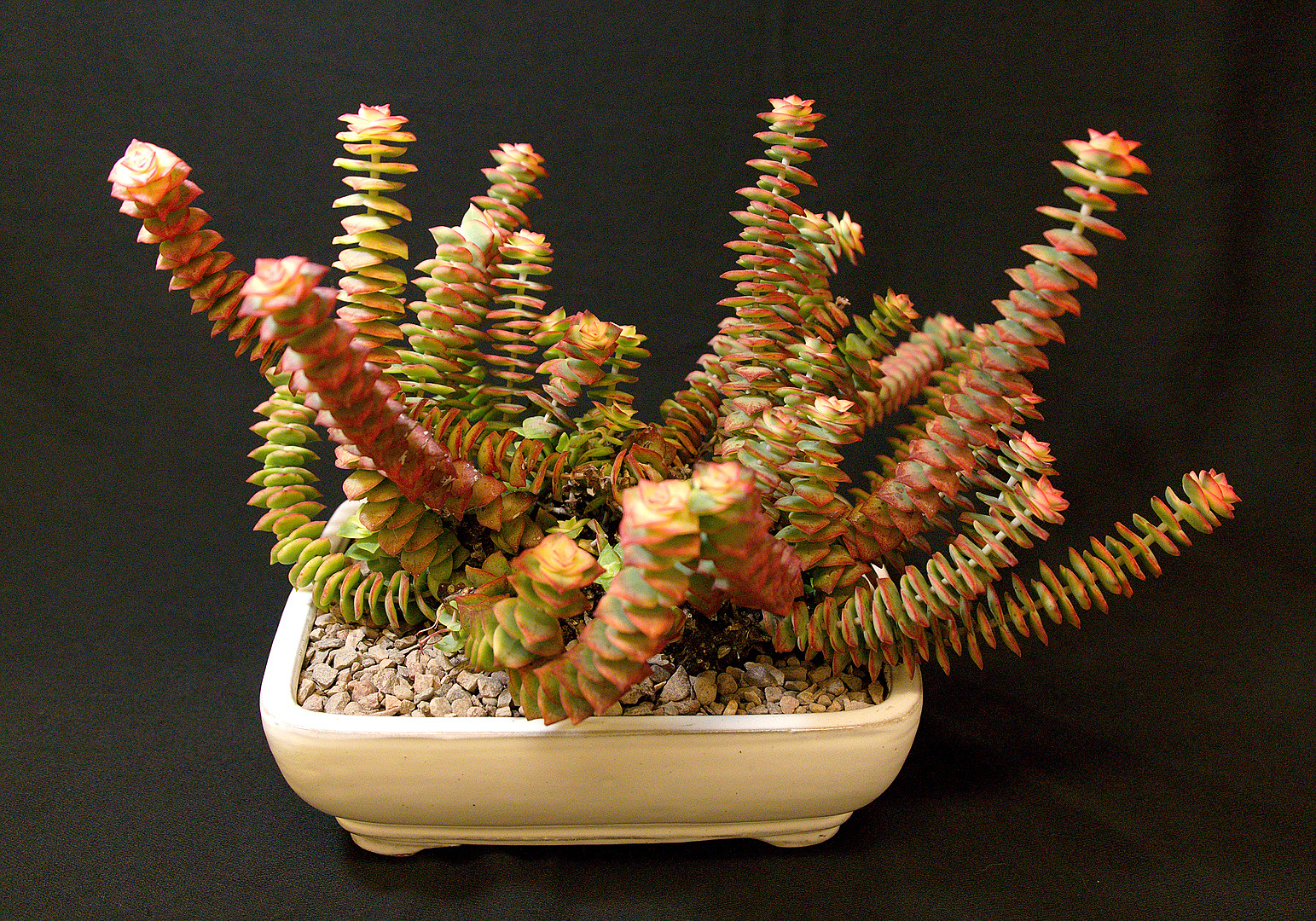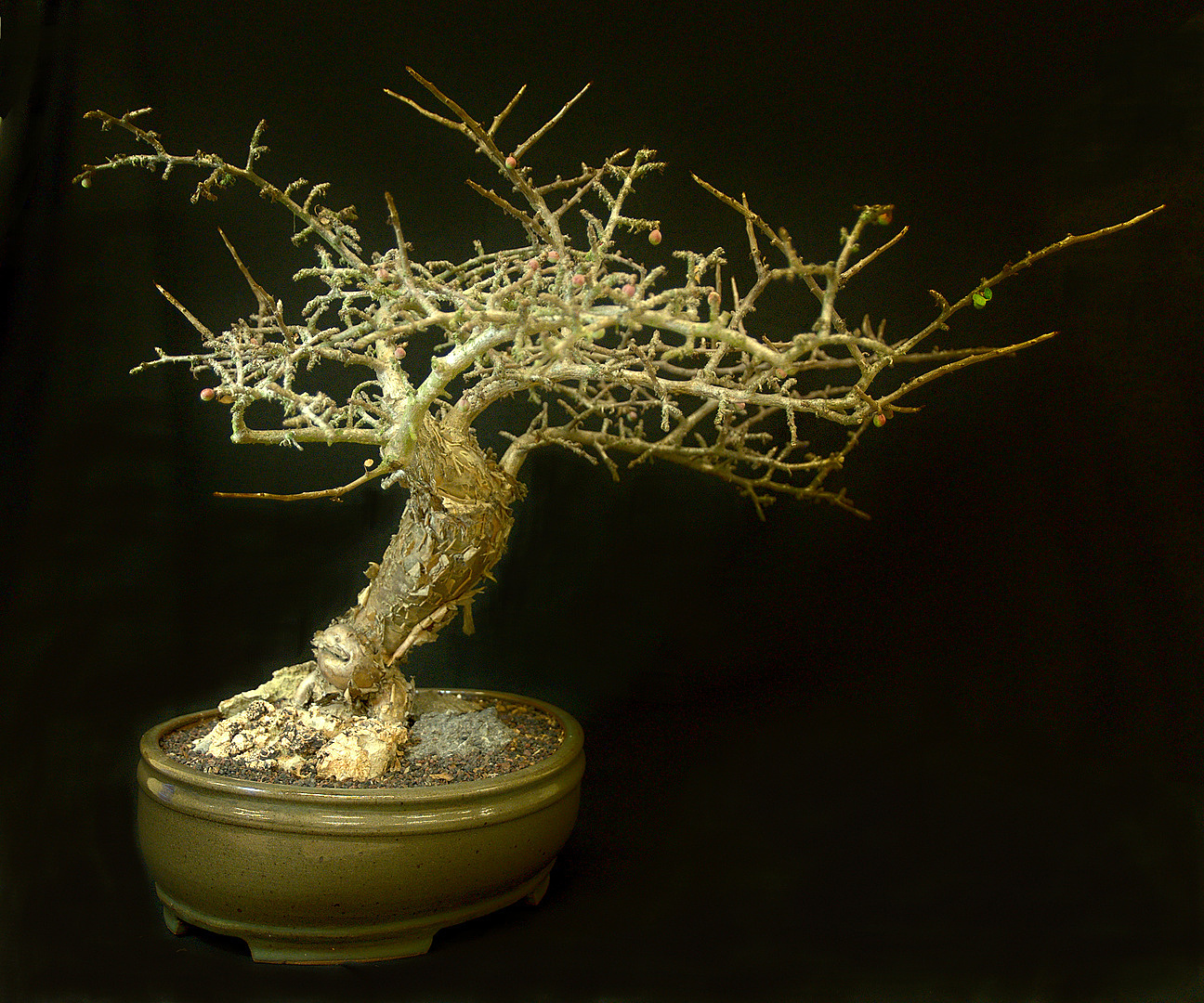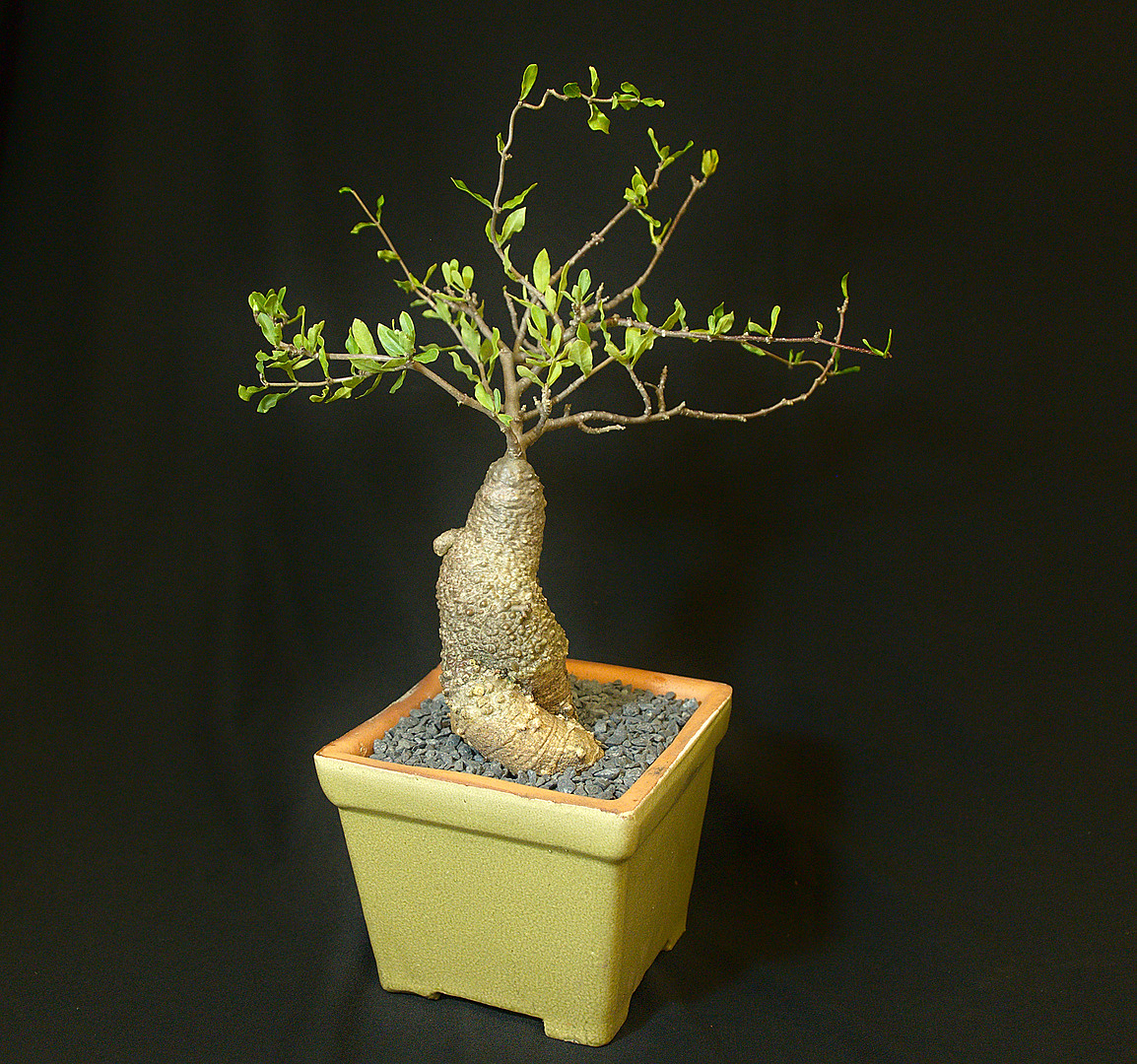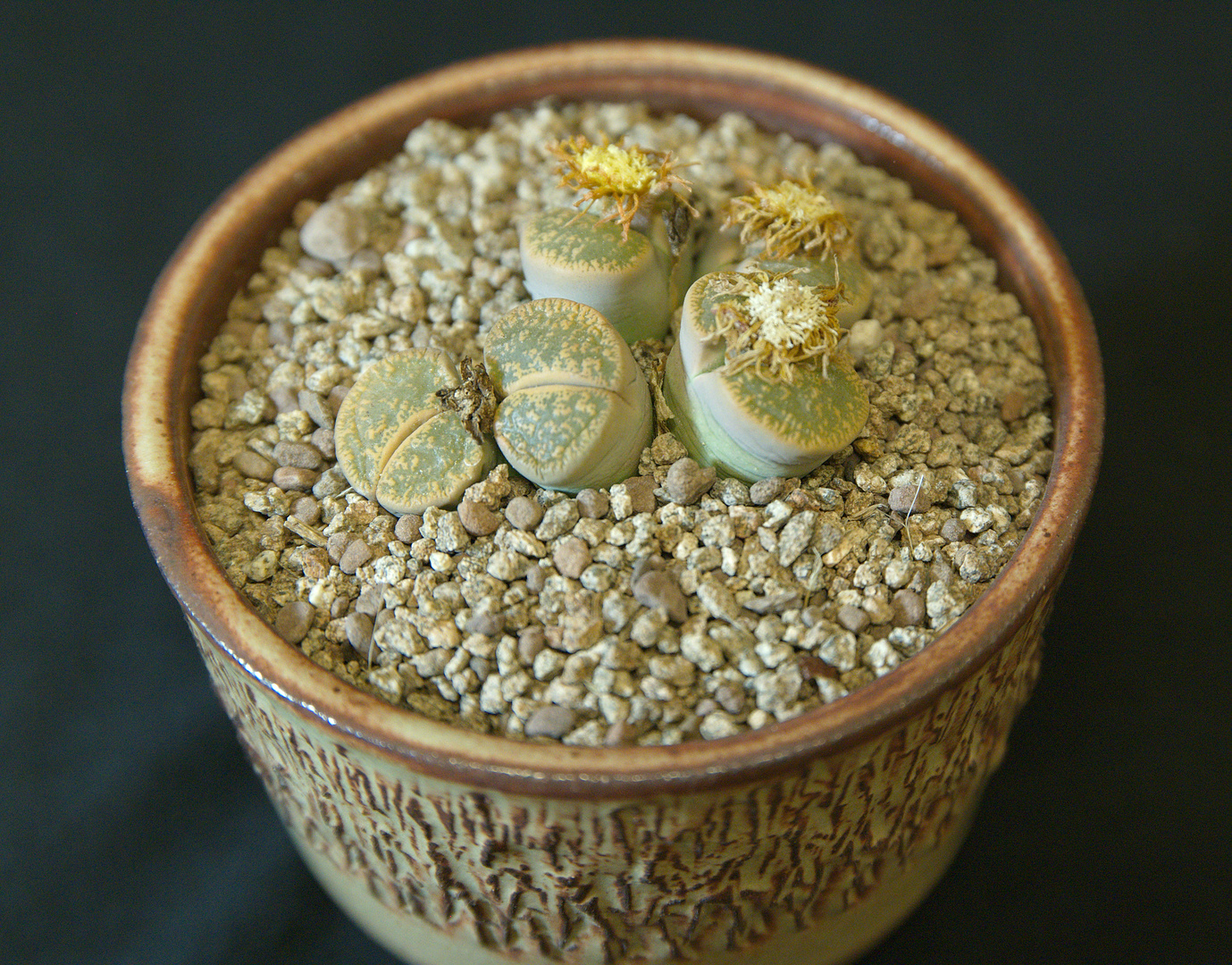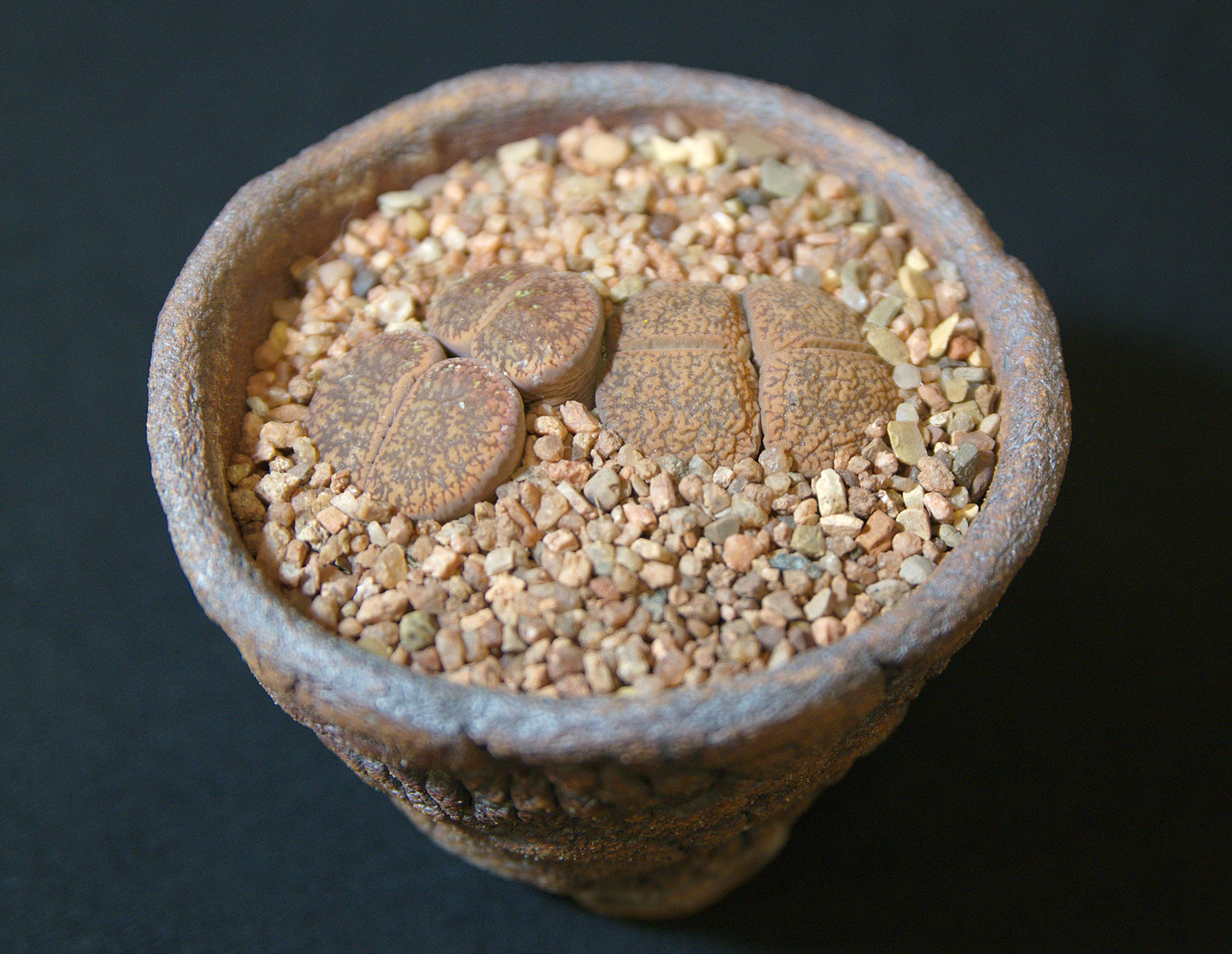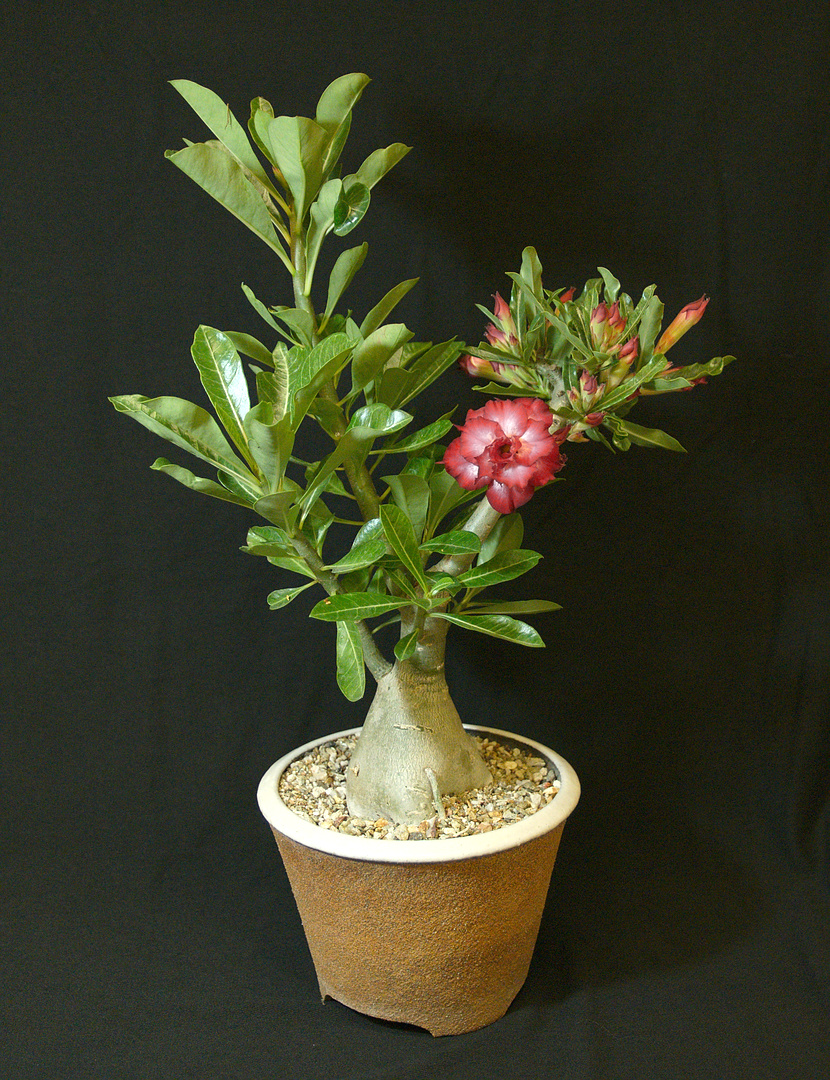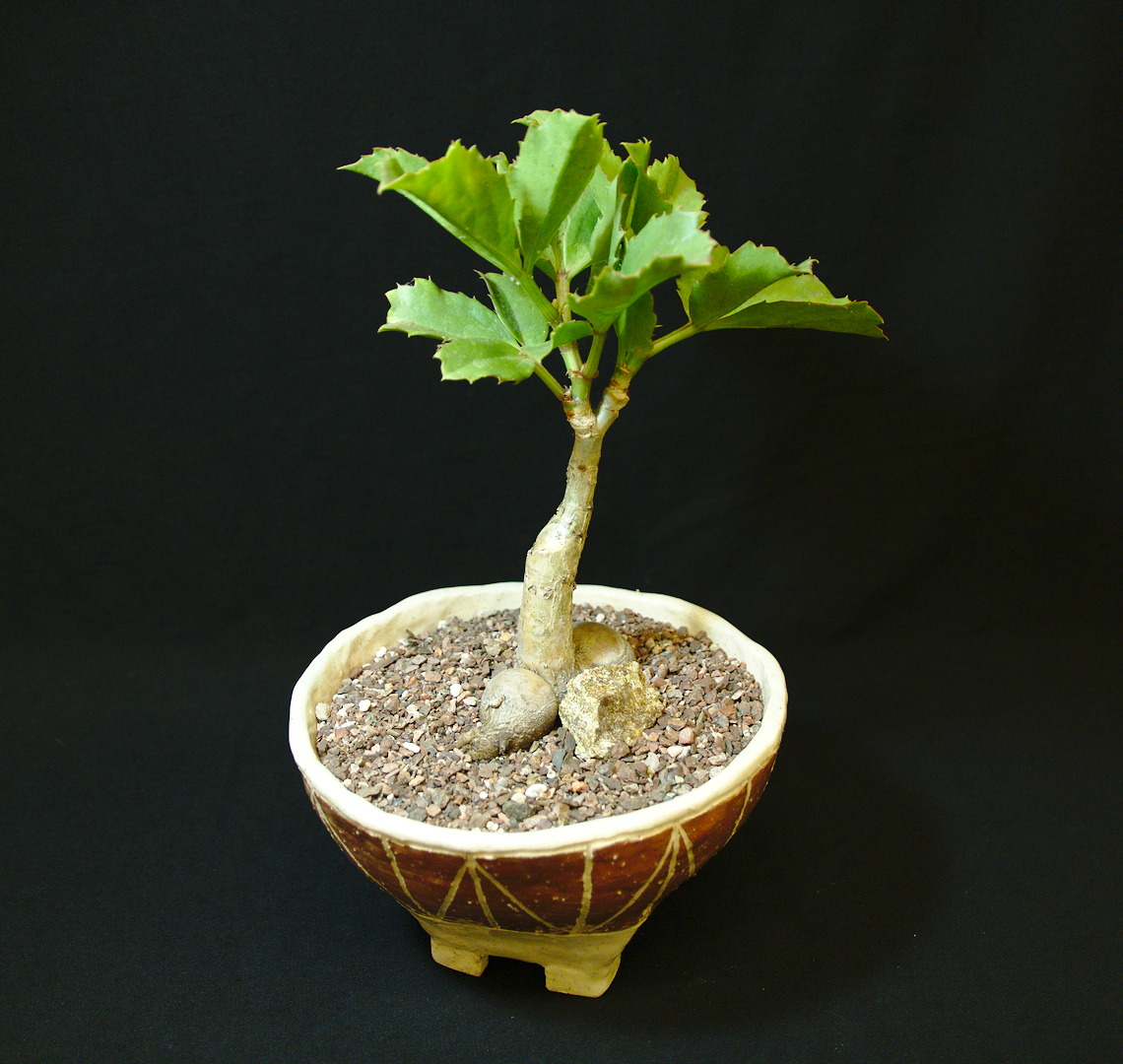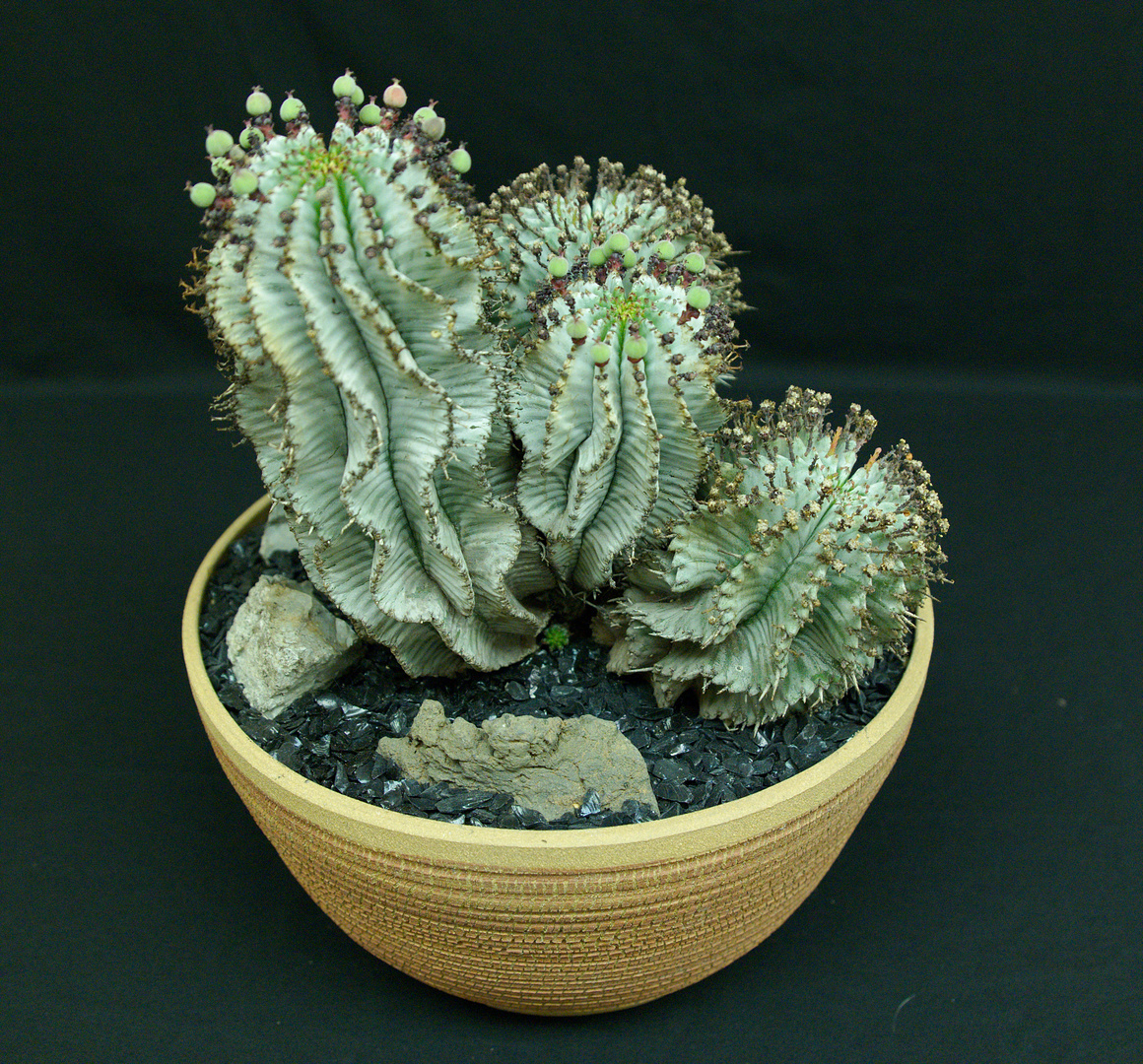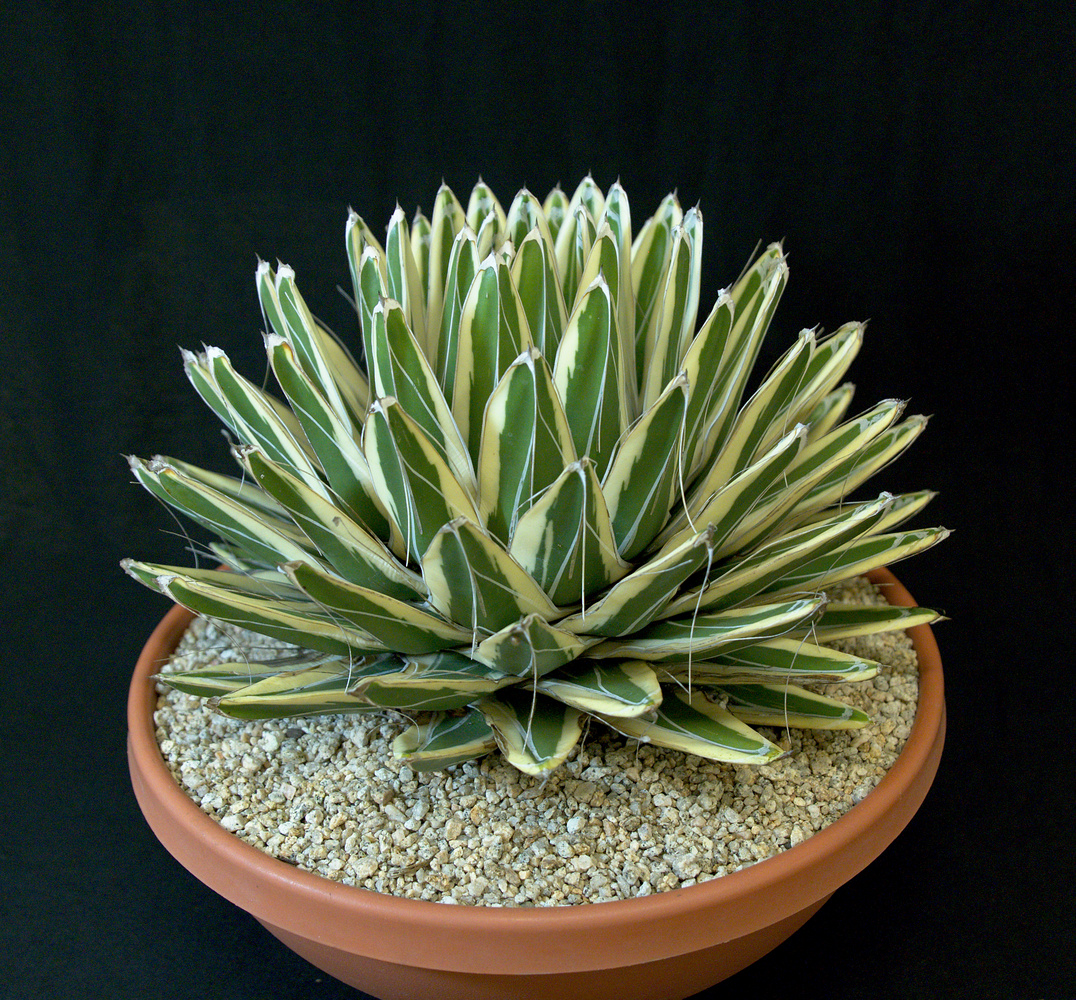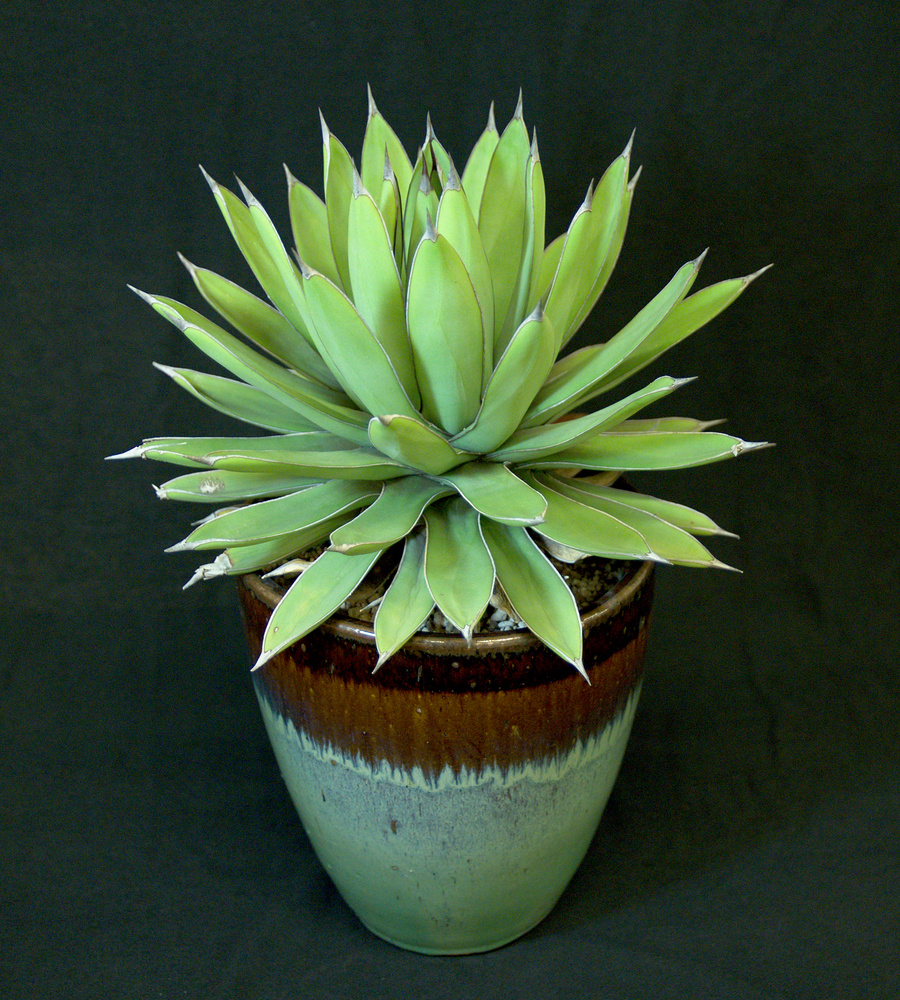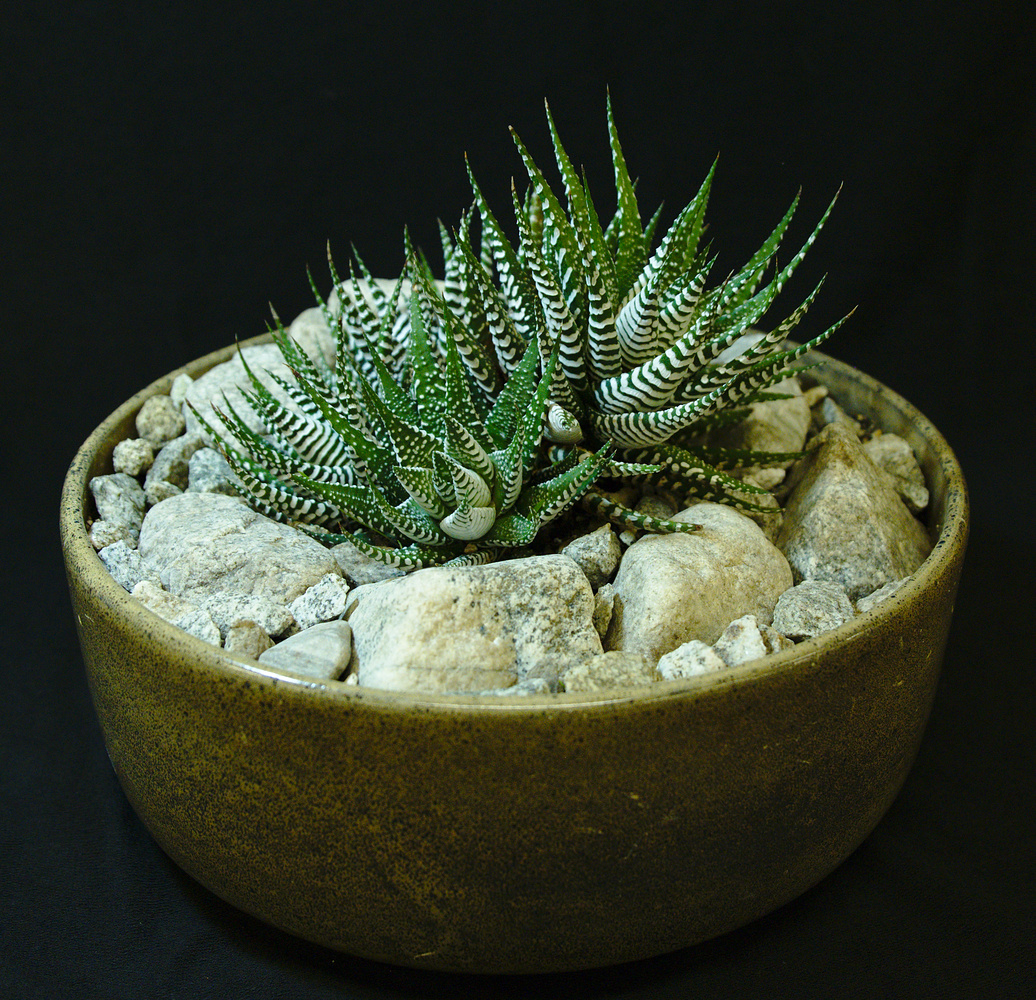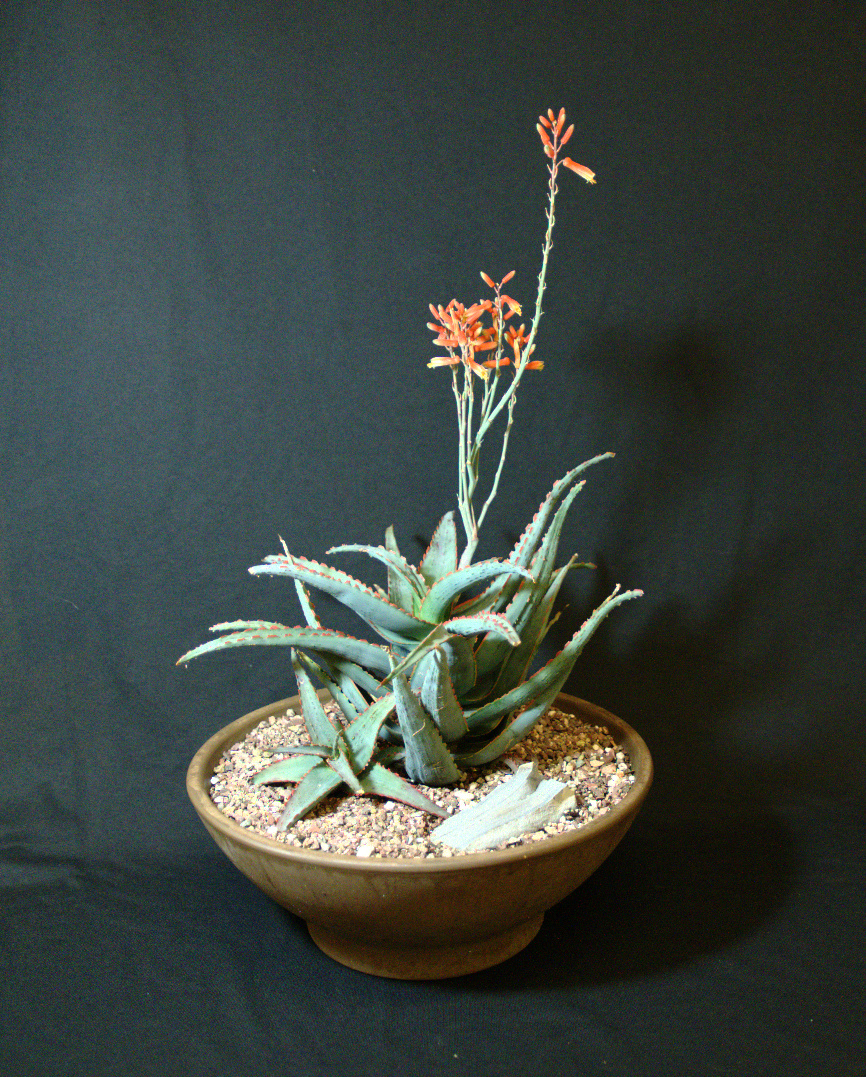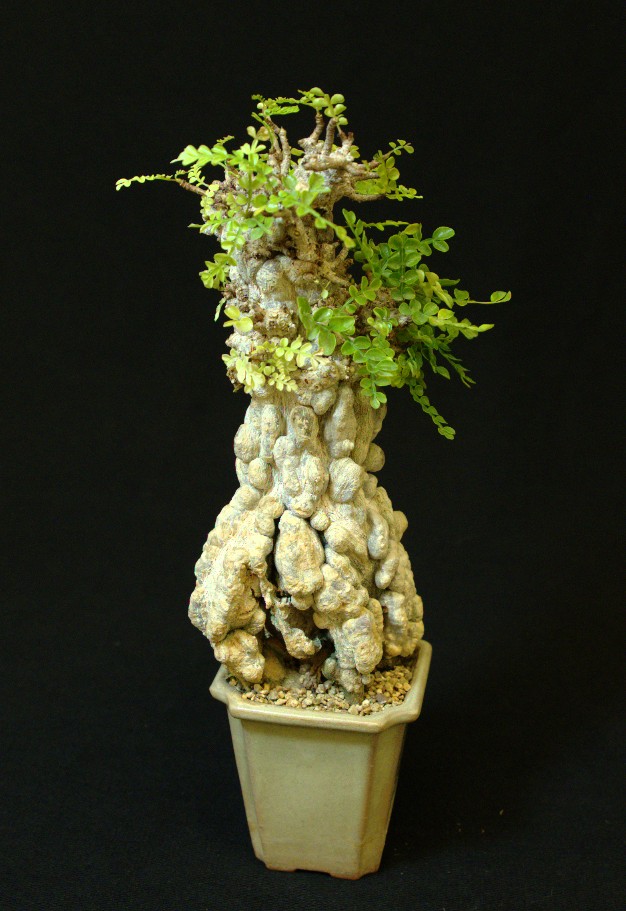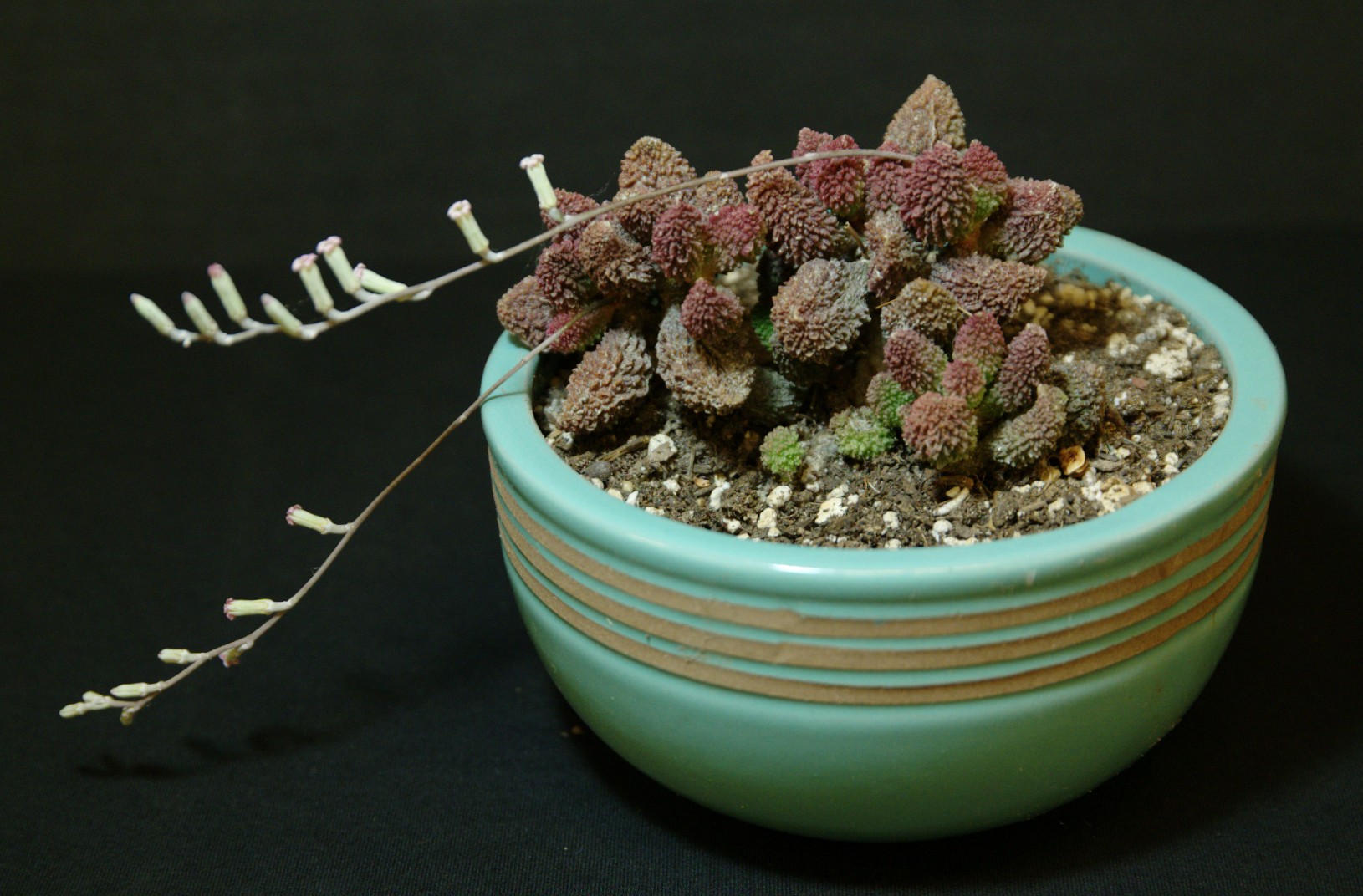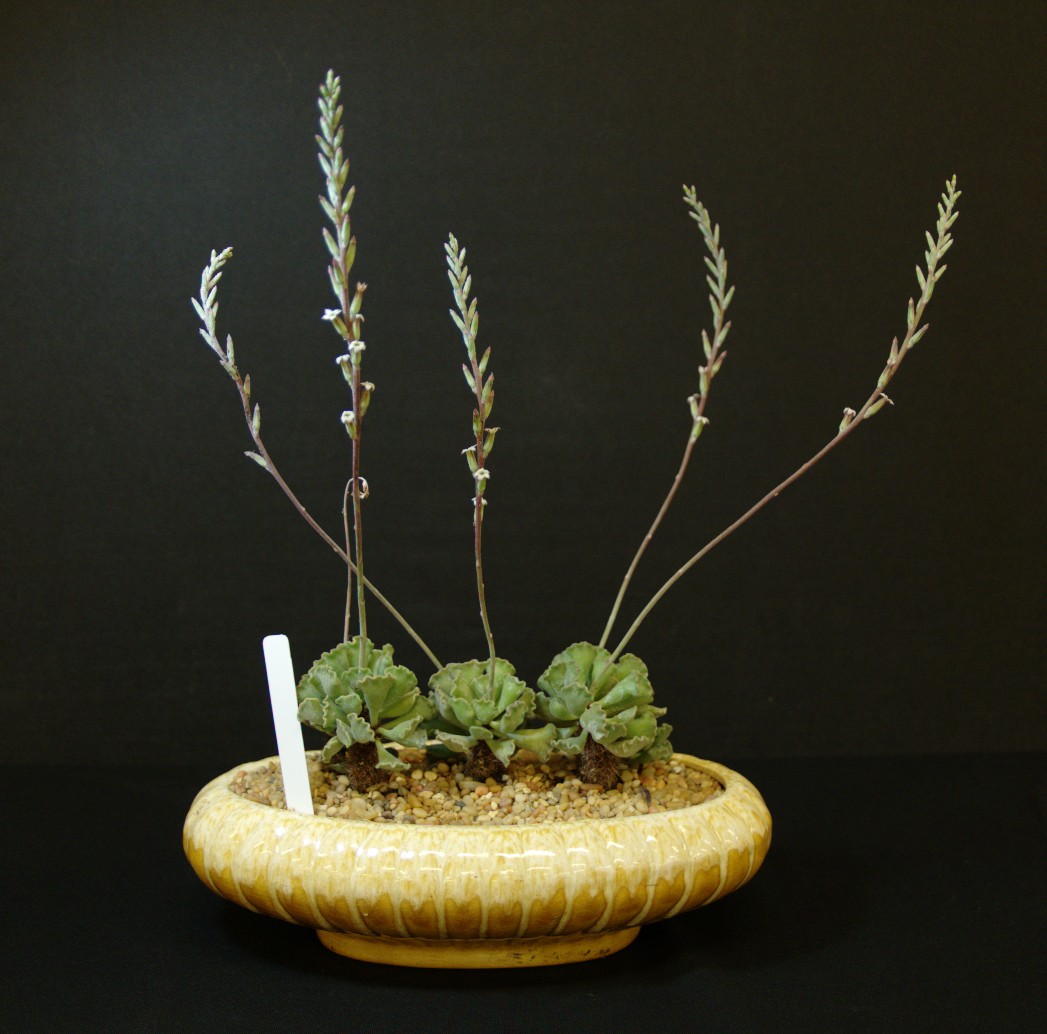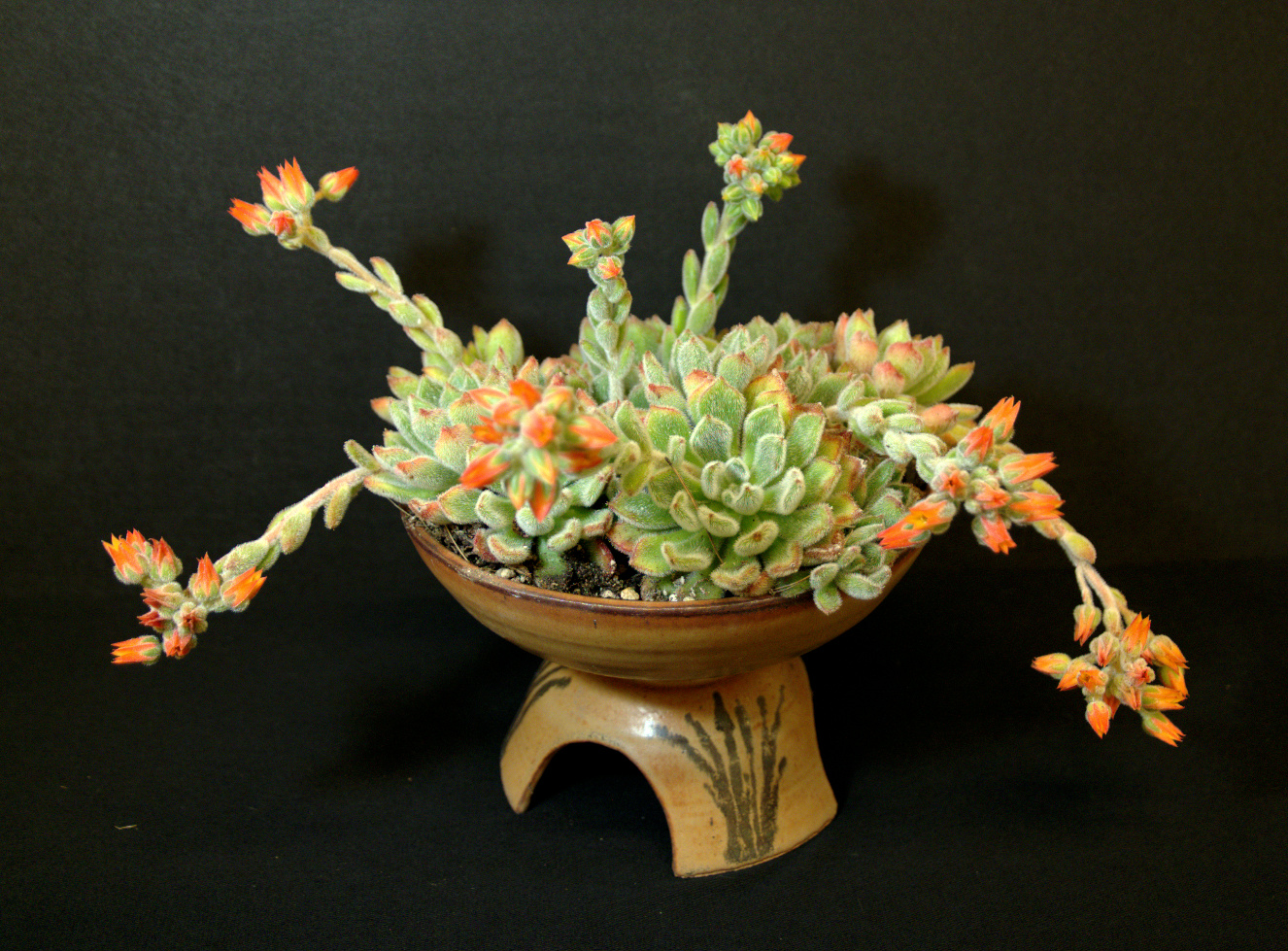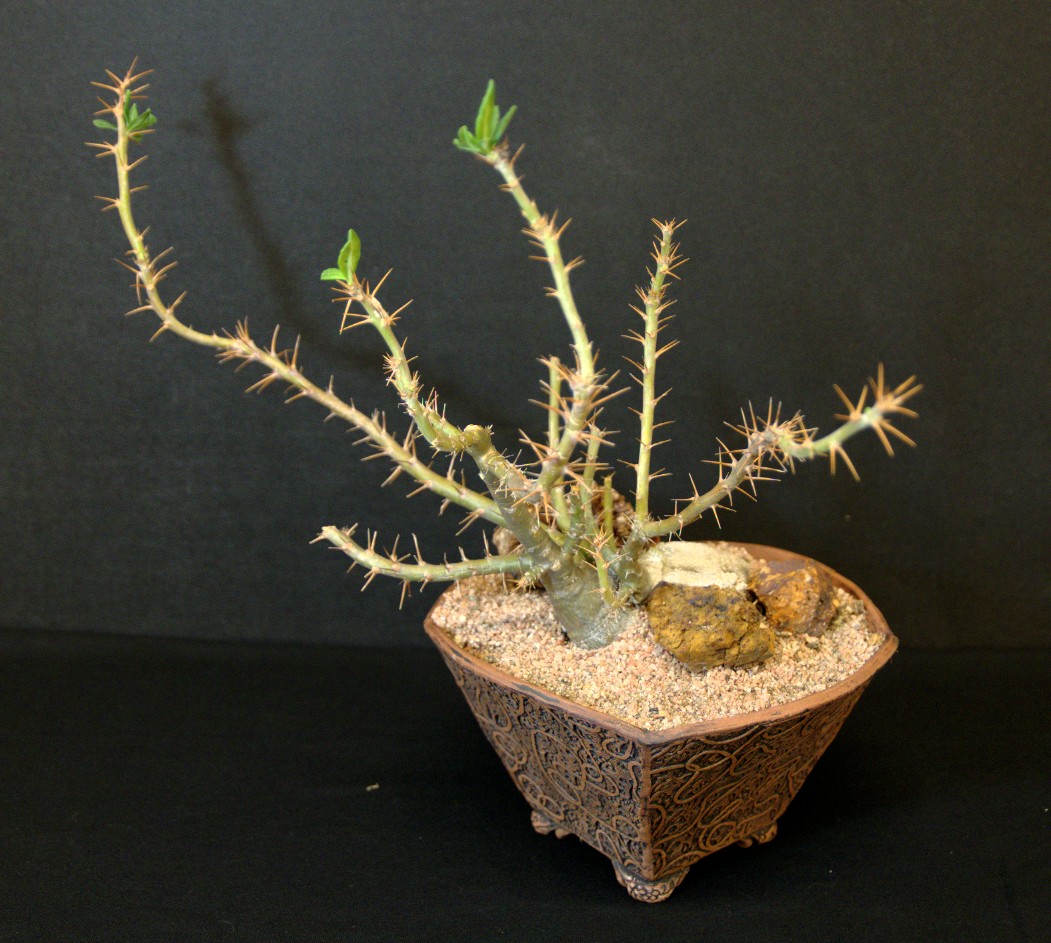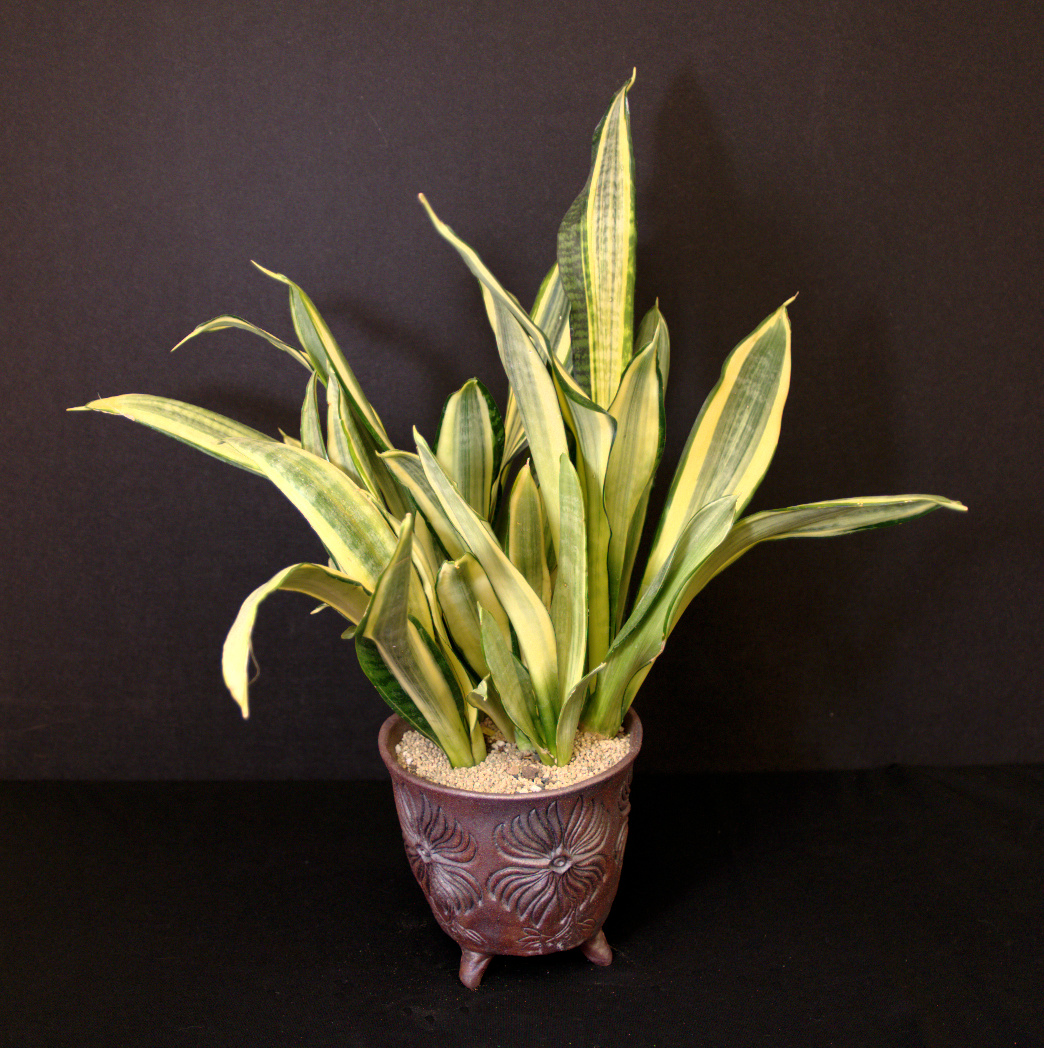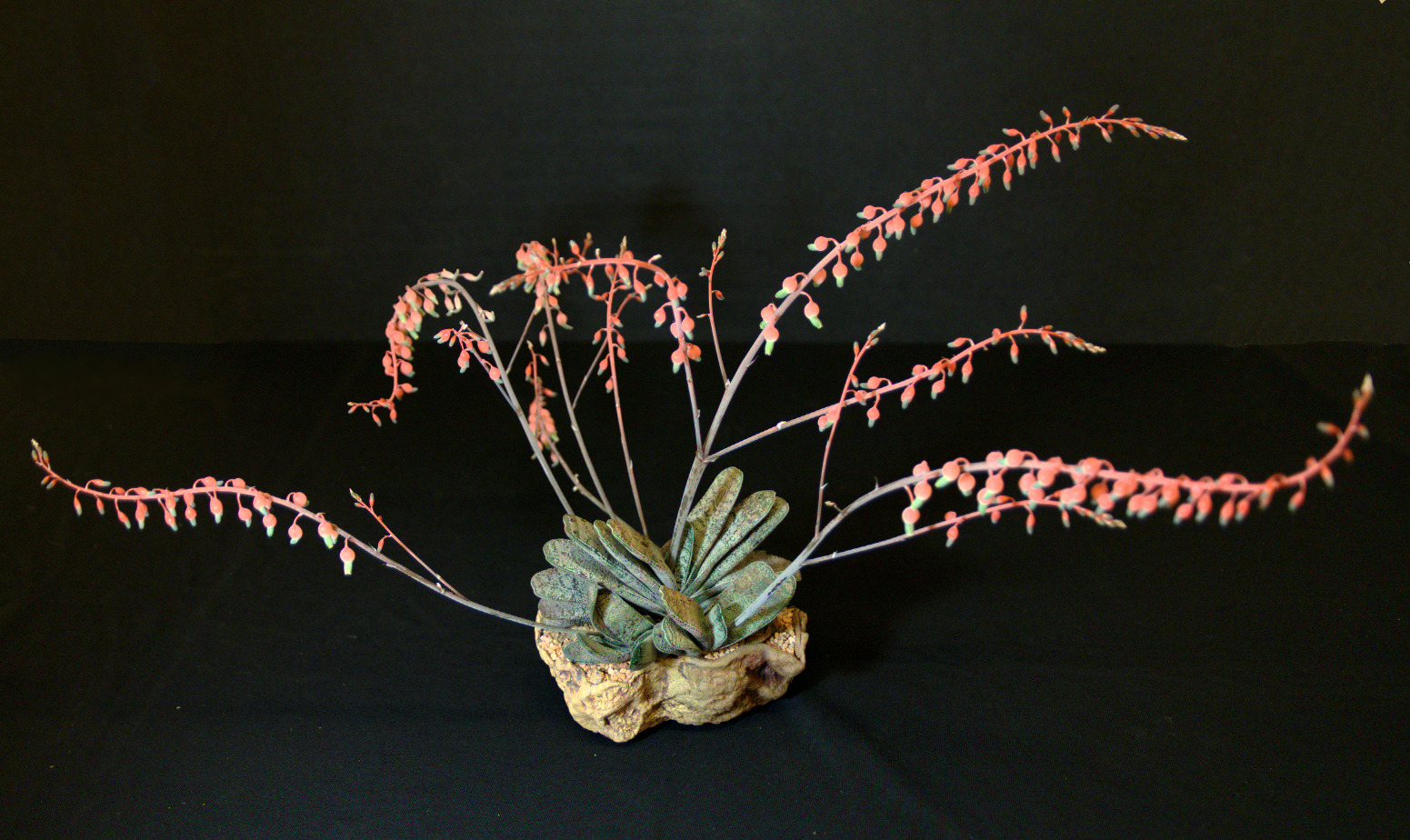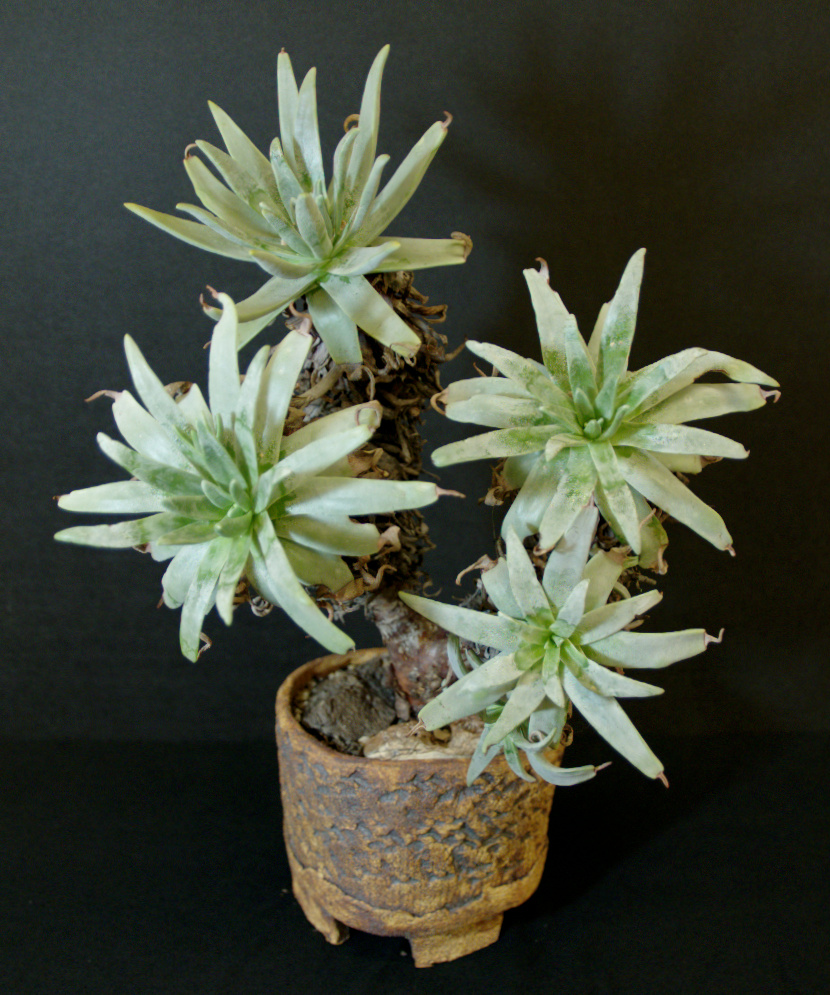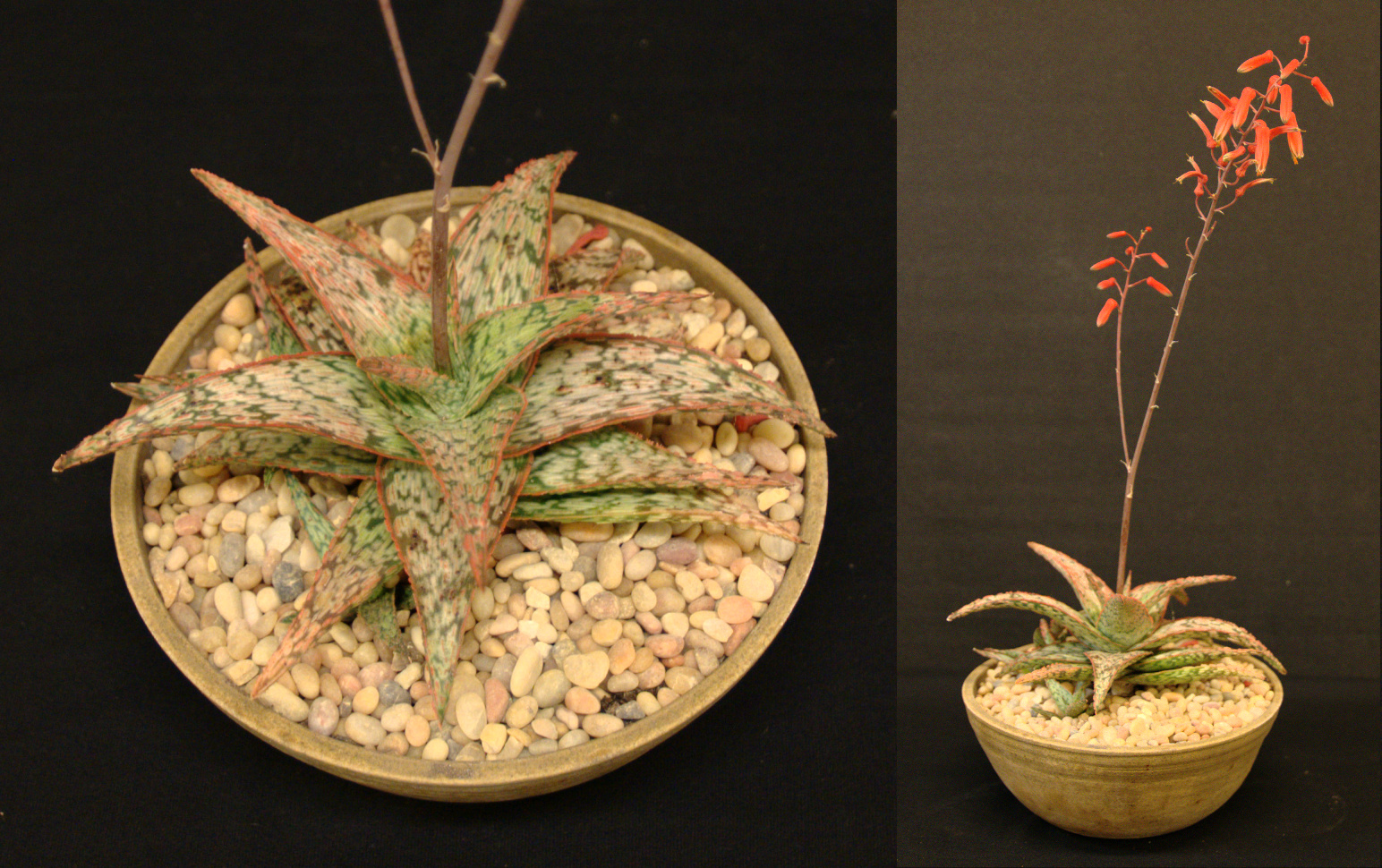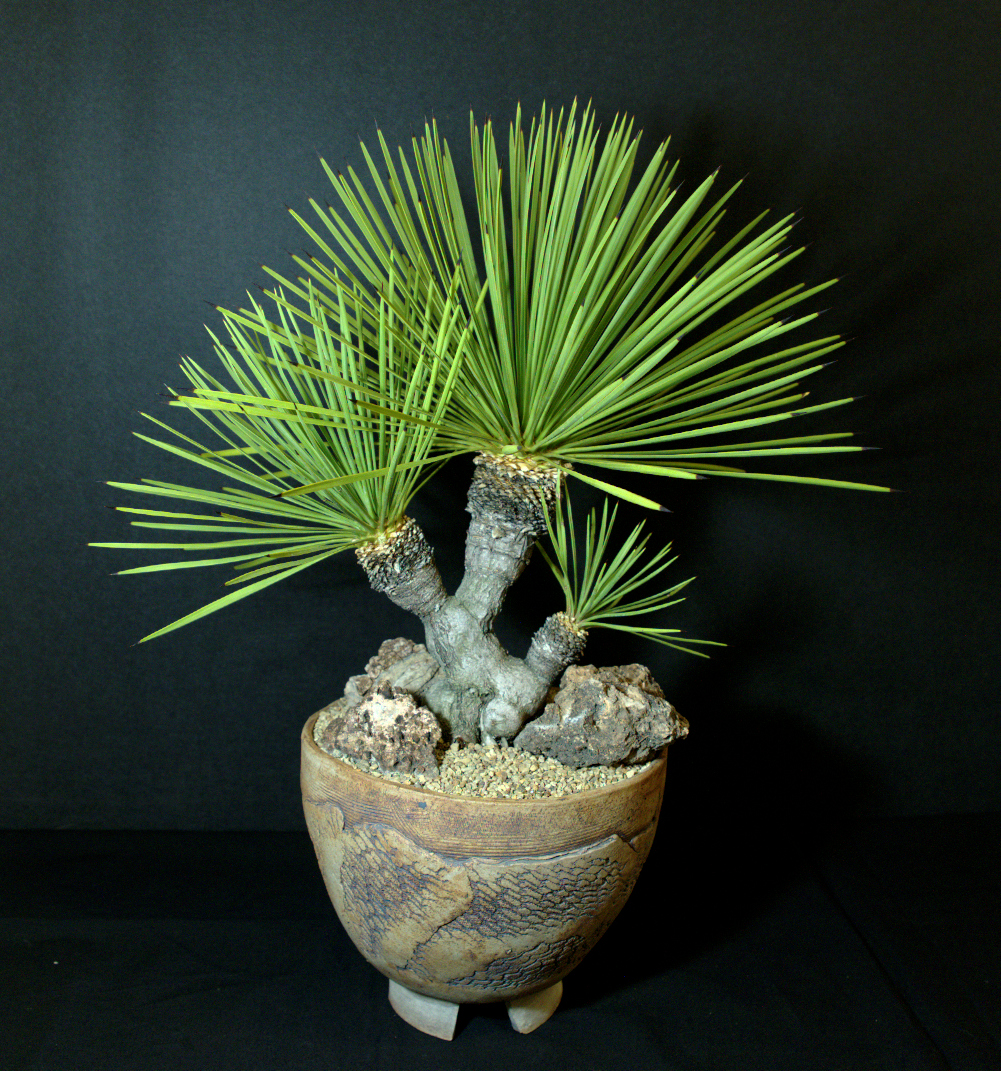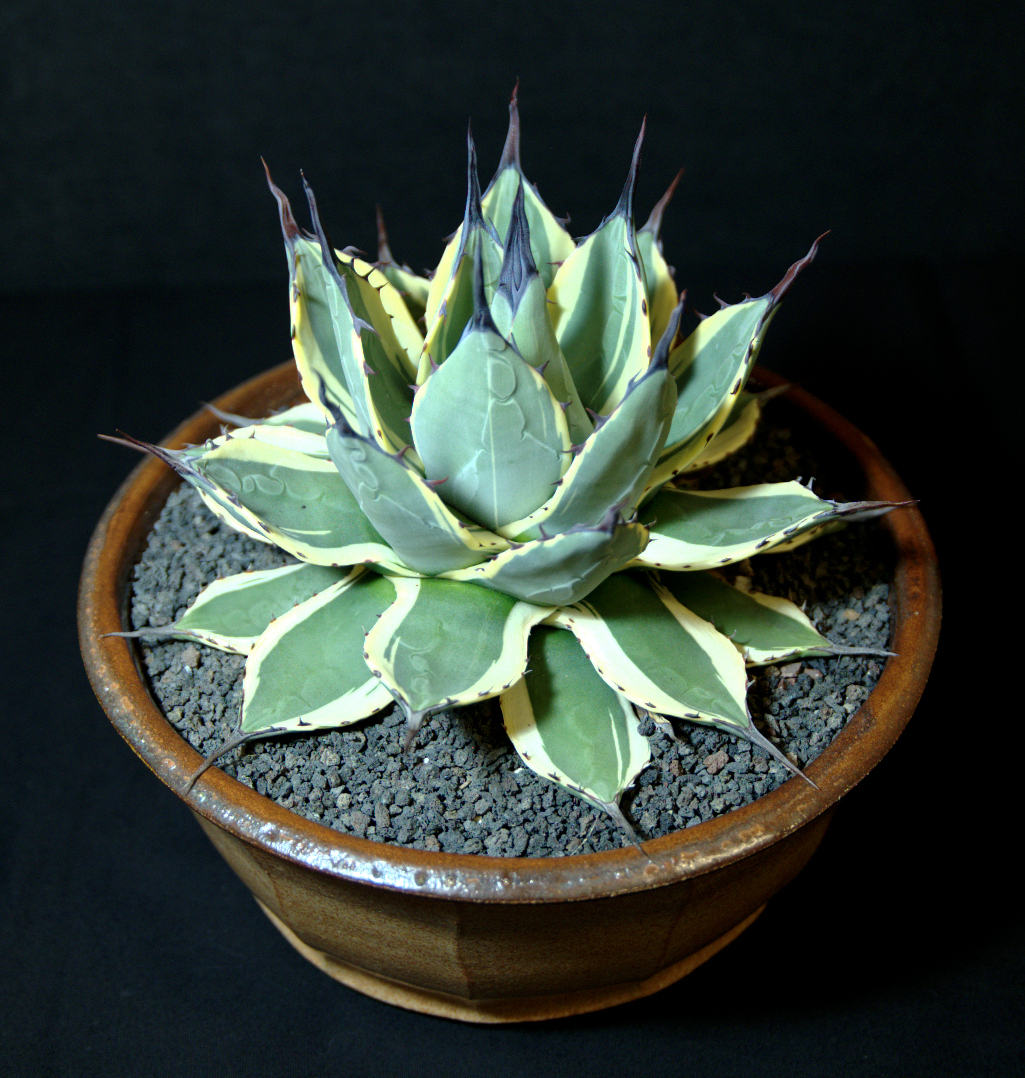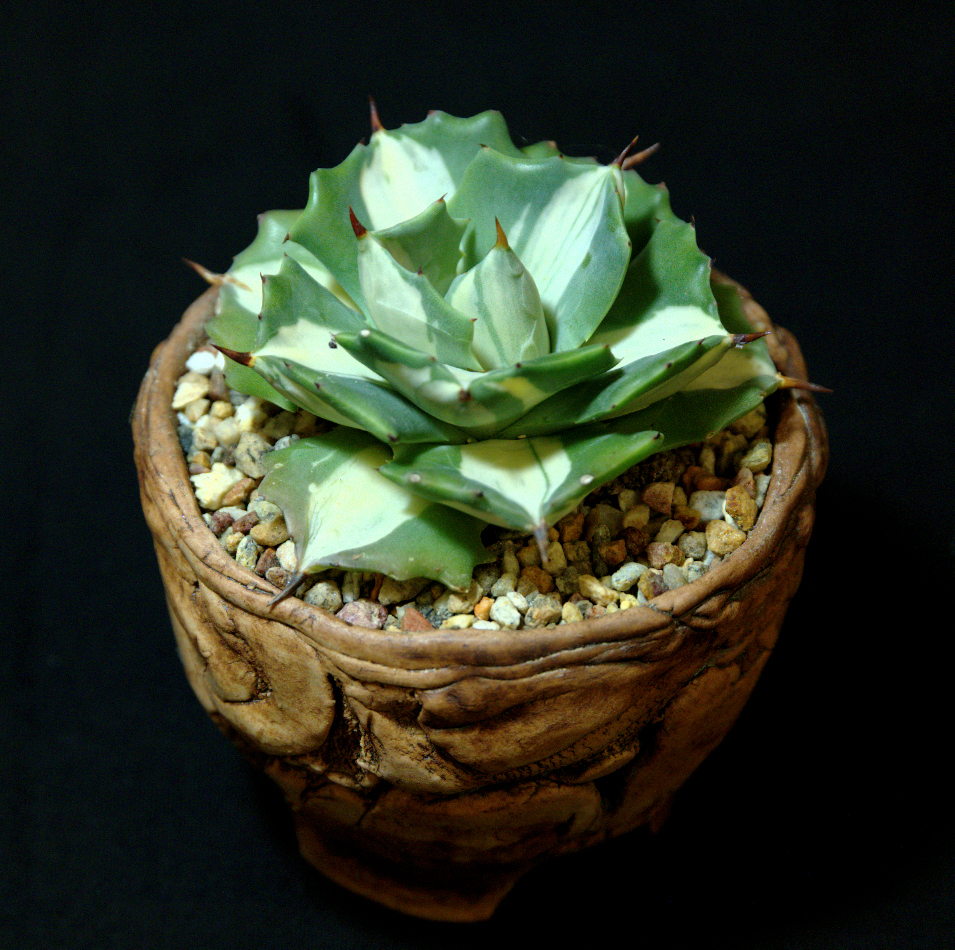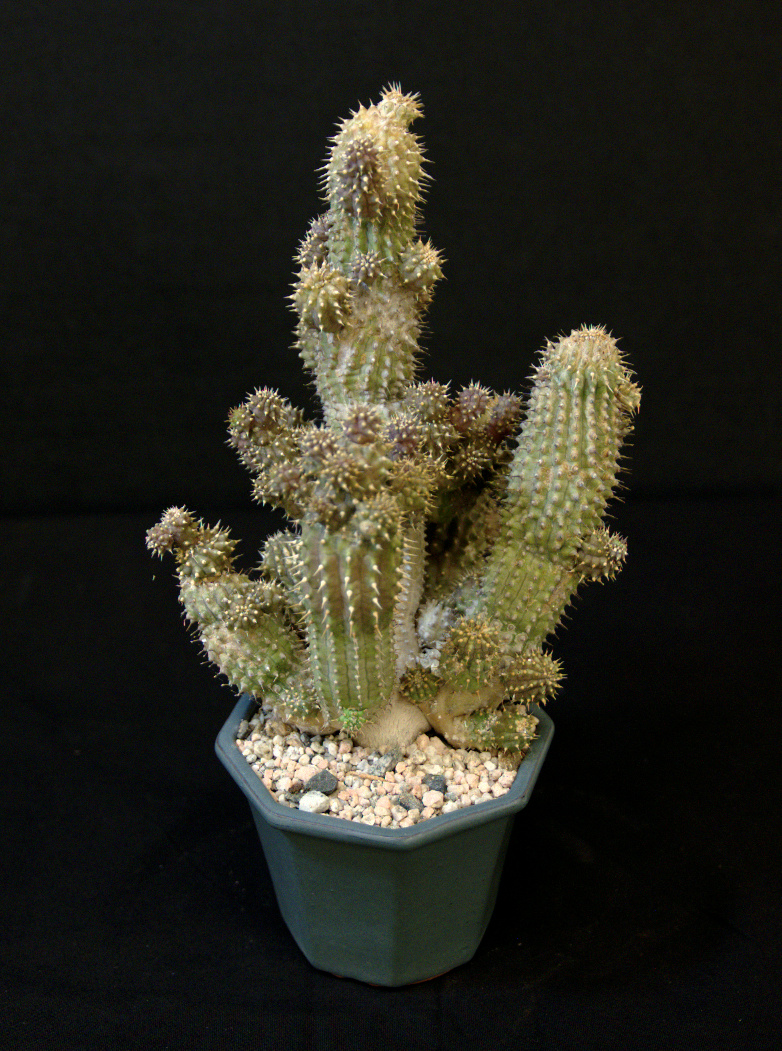April is usually our Show & Sale so we do not assign Cactus or Succulent of the Month genera. There being no Show & Sale this year we decided that we would make the Plants of the Month be “My Favorite Cactus” and “My Favorite Succulent”.
As you probably know the need for social distancing has meant that our monthly meetings are now virtual via Zoom. At our virtual meetings we show the photos of the Cactus and Succulent of the Month that members have sent in. They are not judged, we add one mini show point per photo but a maximum of two points per member.
To be aligned with this month’s speaker’s topic “Staging” we ask that the photos you submit be of your favorite plants that are nicely staged like they would be in an in-person show. They do not have to be recent photos.
Staging involves using ONE plant per pot (unless you are creating a dish garden).
Pick a pot that complements and enhances the plant. The plant should be placed in the pot so that there is a natural front and back with some space between the pot and the plant. Add rocks as needed to decorate the plant and/or stabilize it. Finally place top dressing that brings out a color in the plant so that it too is complementary to both the plant and the pot.
Photographing the plant to show off the plant at its best is also important. If you have a good android or I-phone camera, this is fine. Otherwise the photo should be taken with a high resolution digital camera. It is best to place the plant in a place by itself to minimize distraction behind or beside the plant. Place a background that does not compete with the plant. Above all, before taking the photo, clean the plant and make sure it is free of cobwebs, insects, dried leaves, etc. (if it is newly planted for show, you would have done this already). Position the plant so that it is in the best light. Sometimes, an overcast day makes the best outdoor photo by eliminating shadow.
Submit your entry to Maria at minniecap@icloud.com by Friday April 9th.
Below are past Mini-Show winners as examples of good plants well staged. Most are in fancy pots but some are just in modest containers.
LATIN LOOKUP – Loquerisne Latine (Do you speak Latin)?
The meanings of latin plant names on this page – from http://davesgarden.com/guides/botanary/
- Adenium [a-DEE-nee-um]
Named for Aden, a small country south of Saudi Arabia, where the species is native. - Adromischus [ad-roh-MIS-kus]
From the Greek hadros (thick or stout) and mischos (stalk), referring to the short pedicels. - Agave [a-GAH-vee]
Noble, handsome. - Aloe [AL-oh]
From the Arabic Alloeh. - alternans [al-ter-NANZ]
Alternating. - applanata [ap-plan-AY-tuh]
Flattened. - arabicum [a-RAB-ih-kum]
Of or from Arabia. - baylissiana [bay-liss-ee-AH-na]
Named for Colonel Roy Bayliss, a botanical explorer in South Africa and authority on succulents. - bispinosum [by-spin-OH-sum]
Two-spined. - bivittatus [biv-it-TAY-tus]
Two-banded. - Bursera [ber-SER-uh]
Named for Joachim Burser, 17th century German botanist and physician. - Crassula [KRASS-oo-la, KRASS-uh-la]
Somewhat thickened foliage; diminutive of the Latin crassus (thick, fleshy). - crenulata [kren-yoo-LAY-ta]
With small, rounded teeth. - cristatus [kris-TAY-tus]
Crested. - Cryptanthus [krip-TAN-thus]
Hidden flower. - cylindrifolia [sil-Iin-drih-FOH-lee-uh]
Having leaves that are cylindrical or slightly tapering. - cymbiformis [sim-BIH-for-miss]
Boat-shaped. - Cyphostemma [sy-foh-STEM-uh]
From the Greek kyphos (tumor, hump) and stemma (garland, crown). - decaryi [de-KAR-yee]
Named for Raymond Decary, 20th century plant collector. - dorotheae [dor-uh-THEE-ay]
Named for Dr. Dorothea Christina van Huyssteen. - Dudleya [DUD-lee-yuh]
Named for William Russel Dudley, 19th century botany professor at Stanford University in California (U.S.). - Dyckia [DY-kee-uh, DIK-ee-uh]
Named for Prince Joseph Salm-Reifferscheid-Dyck, 19th century botanist and author of book on succulents. - Echeveria [ech-eh-VER-ee-a, ech-eh-ver-EE-a]
Named for Anastasio Echeverria y Godoy, 18th century Spanish botanist. - edulis [ED-yew-liss]
Edible. - Euphorbia [yoo-FOR-bee-uh]
Named for Euphorbus, Greek physician to Juba II, King of Mauretania. - fagaroides [fag-ar-OY-deez]
Resembles Fagara, an old genus name now generally classified as Zanthoxylum. - Fockea [FOK-ee-uh]
Named for Dr. Focke Albers, modern-day German professor and expert on the Asclepiadaceae family. - fosteriana [fos-ter-ee-AY-nuh]
Named for Mulford Bateman Foster, 20th century American horticulturist who provided many specimens to the botanist Lymen B. Smith. - Gasteria [gas-TAIR-ee-uh]
From gaster, (belly, stomach); referring to swollen base on flower. - gibbiflora [gib-bih-FLOR-uh]
Swollen flower. - gigantea [jy-GAN-tee-uh, gy-GAN-tee-uh]
Large, gigantic. - harlana [har-LAY-nuh]
For the occurance near Harla, Harar Prov., Ethiopia. - Haworthia [ha-WORTH-ee-a]
Named for Adrian Hardy Haworth, 19th century British botanist. - haworthii [hay-WOR-thee-eye]
Named for Adrian Hardy Haworth, 19th century British botanist. - herrei [HER-ray-eye]
Named for Dr. Hans Herre, 20th century botanist and expert on South African succulents. - Hoodia [HOOD-ee-uh]
Named for Mr. Hood, a 19th century English succulent grower. - hookeri [HOOK-er-ee]
Named for Sir William Jackson Hooker, 19th century botany professor & director of the Royal Botanical Gardens at Kew; or his son Joseph Dalton Hooker, 19th century British botanist & plant collector. - horrida [HOR-id-uh, hor-ID-uh]
Prickly, bristly. - humilis [HEW-mil-is, HUM-il-is]
Lowest, dwarf, small, slight. - immaculatus [im-mak-yoo-LAH-tus, im-mak-yoo-LAY-tus]
Spotless, immaculate. - isthmensis [isth-MEN-sis]
Of or from an isthmus, a narrow strip of land bounded by water on both sides (i.e., the Isthmus of Tehuantepec). - juttae [JOO-tay-ee]
Named for Jutta Dinter, the wife of Professor Kurt Dinter, 20th century German botanist and collector in Africa. - Kalanchoe [kal-un-KOH-ee]
From the Chinese name for one of the species. - lamerei [la-MER-ee-eye]
named after La Mere. - Lithops [LY-thops]
Like stone. - lophantha [low-FAN-tha]
Crested flower. - marianae [mair-ee-AN-ay-ee]
Named for Marian Marloth, wife of South African botanist Dr. Rudolph Marloth. - marmorata [mar-mor-RAY-tuh]
Marbled. - milii [MIL-ee-eye]
Named for M. le baron Milius, Governor of Ile Bourbon, present-day Ile de la Reunion (Reunion Island). - obesum [oh-BEE-sum]
Fat. - Opercularia [op-er-koo-LAY-ree-a]
Lidded; with a lid. - Pachypodium [pak-uh-PO-dee-um]
Thick foot. - Pelargonium [pe-lar-GO-nee-um]
From the Greek for Stork referring to the seed heads. - perforata [per-for-AY-tuh]
Perforated, punctured. - Sansevieria [san-se-VEER-ee-uh]
Named for Prince Raimond de Sansgrio de Sanseviero, 18th century patron of botanical expeditions. - Senecio [sen-ek-ee-o , sen-NEESH-shee-oh]
Latin form of old man refers to hairy parts of flowers. - Stapelia [sta-PEL-ee-uh]
Named for Johannes Bodaeus van Stapel, 17th century Dutch botanist and physician. - striata [stree-AH-tuh]
Striped or fluted. - succulentum [suk-yoo-LEN-tum]
Succulent, fleshy. - trifasciata [try-fask-ee-AH-tuh]
Three bundles. - tubifera [too-BIH-fer-uh]
Bearing tubes. - victoriae-reginae [vik-TOR-ee-ay ree-JIN-ay-ee]
Named for Queen Victoria, 19th century monarch of Great Britain; also frequently spelled victoria-reginae. - virens [VEER-enz]
Green. - viscosa [vis-KOH-suh]
Sticky. - Yucca [YUK-uh]
From the Caribbean name for a totally different plant.
